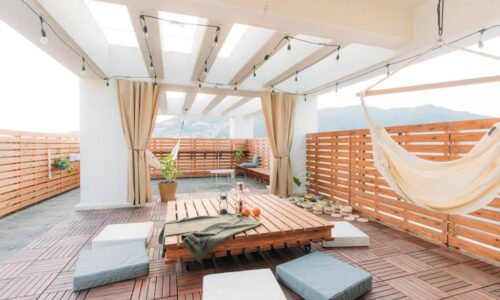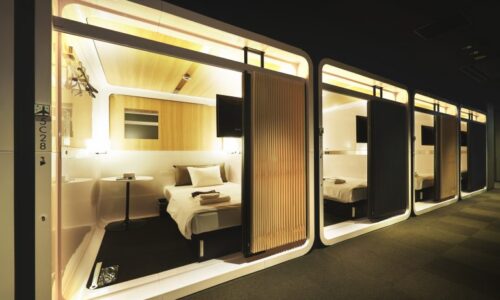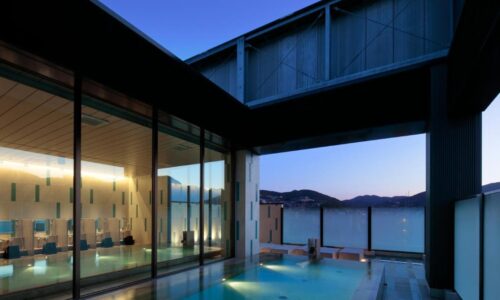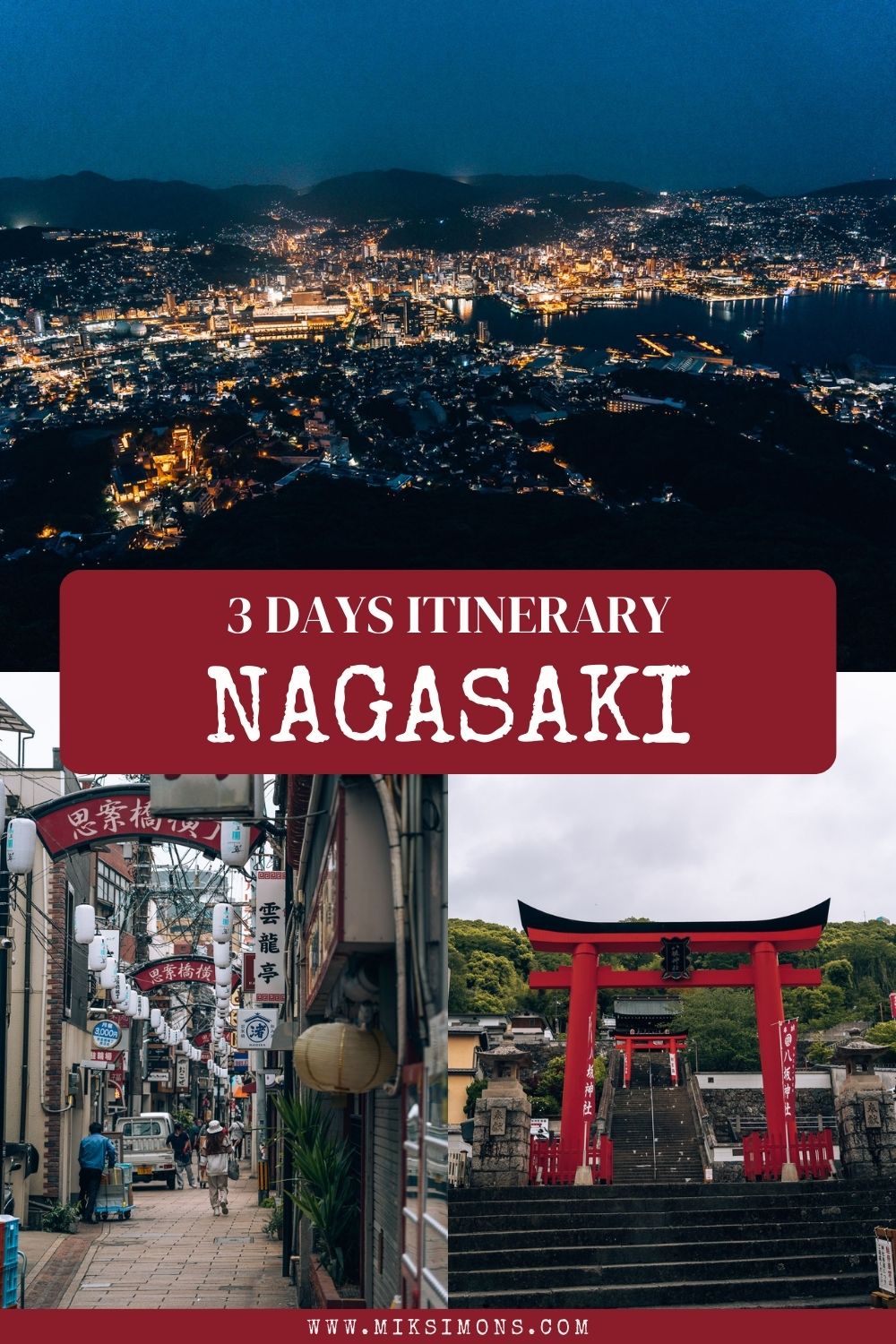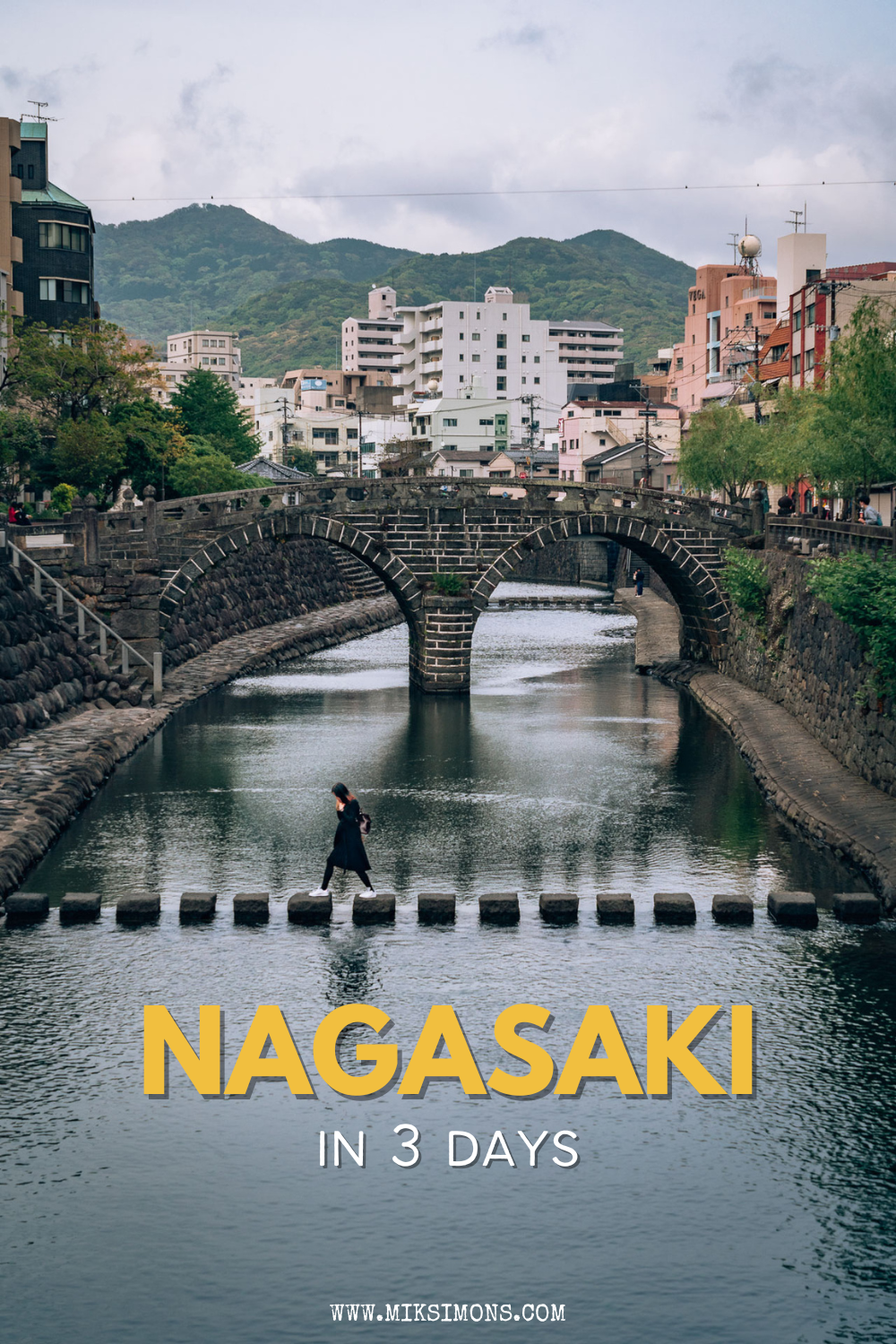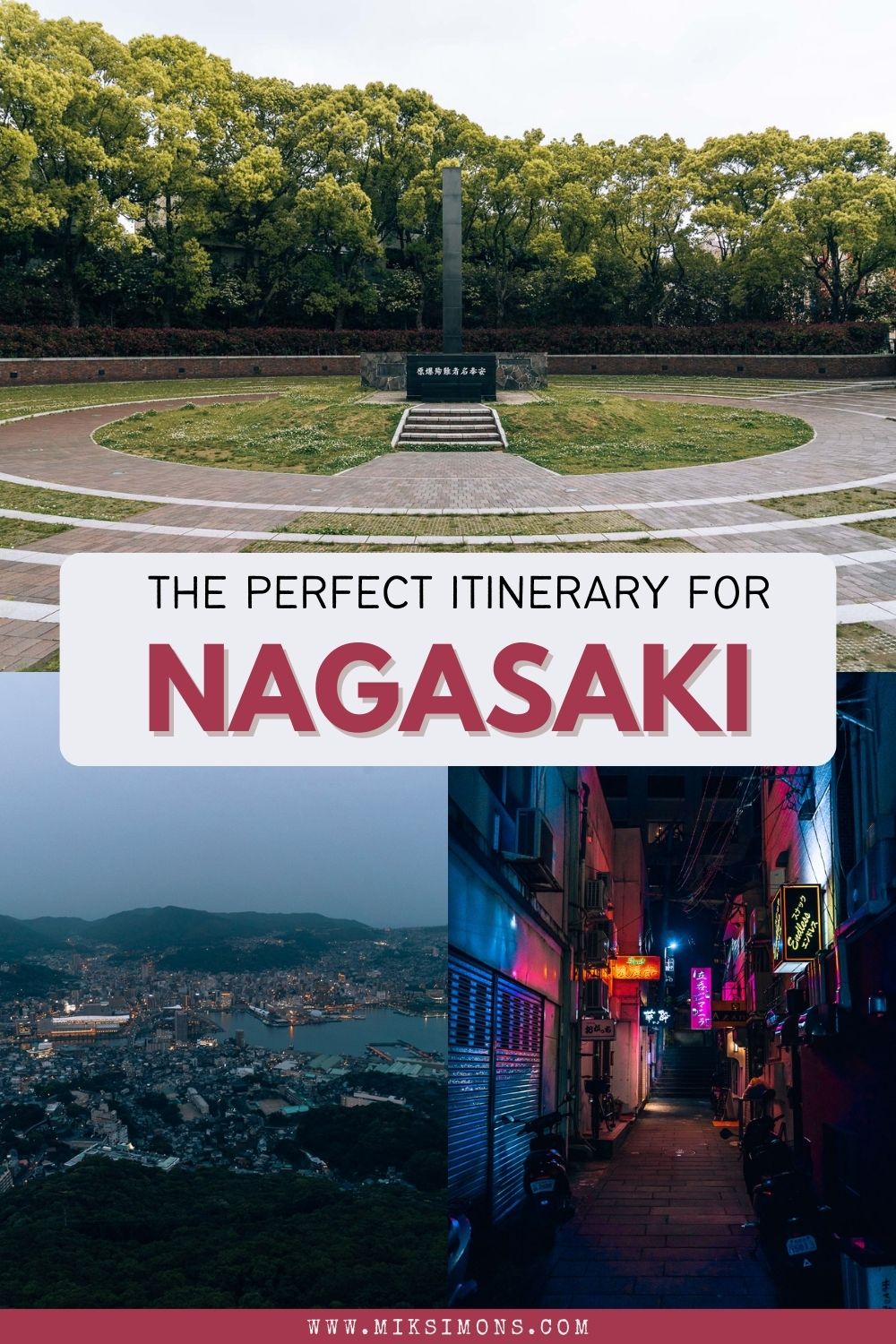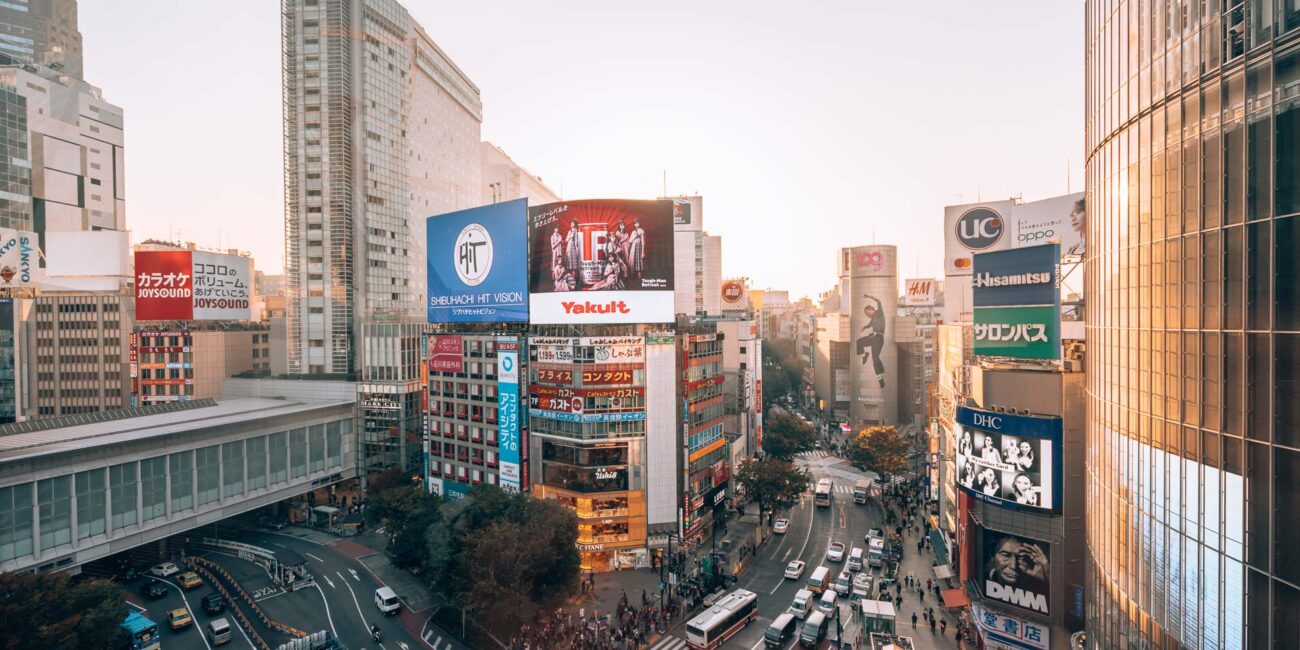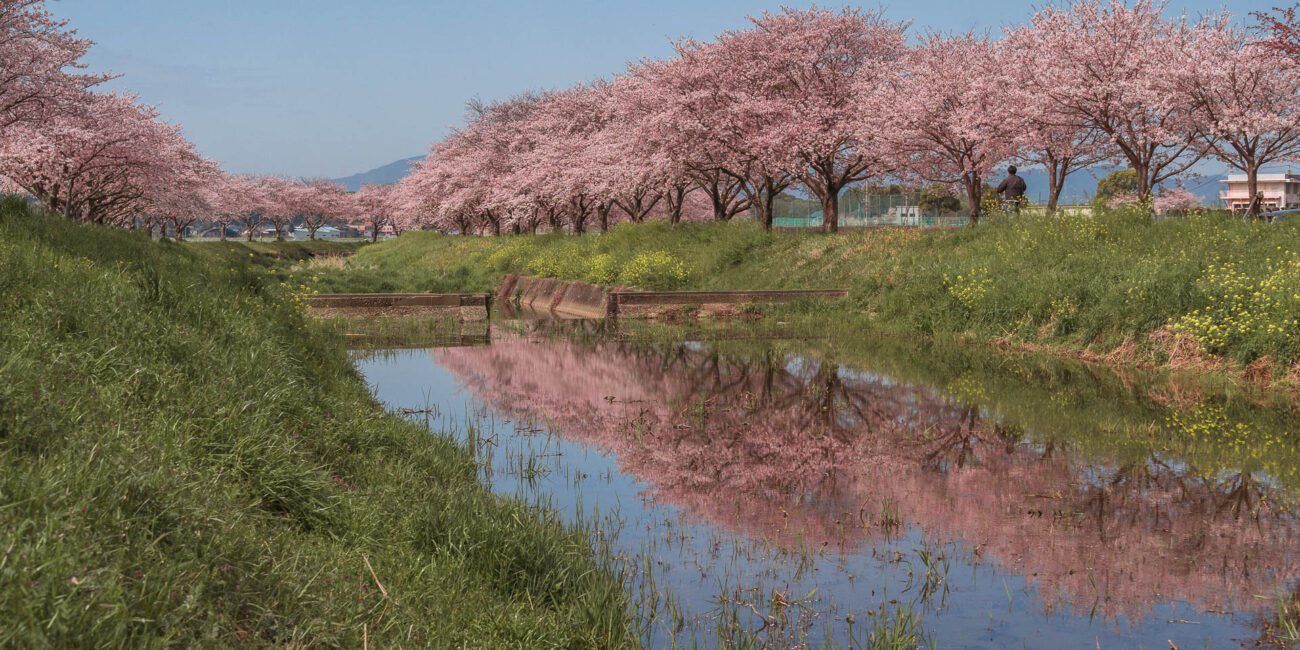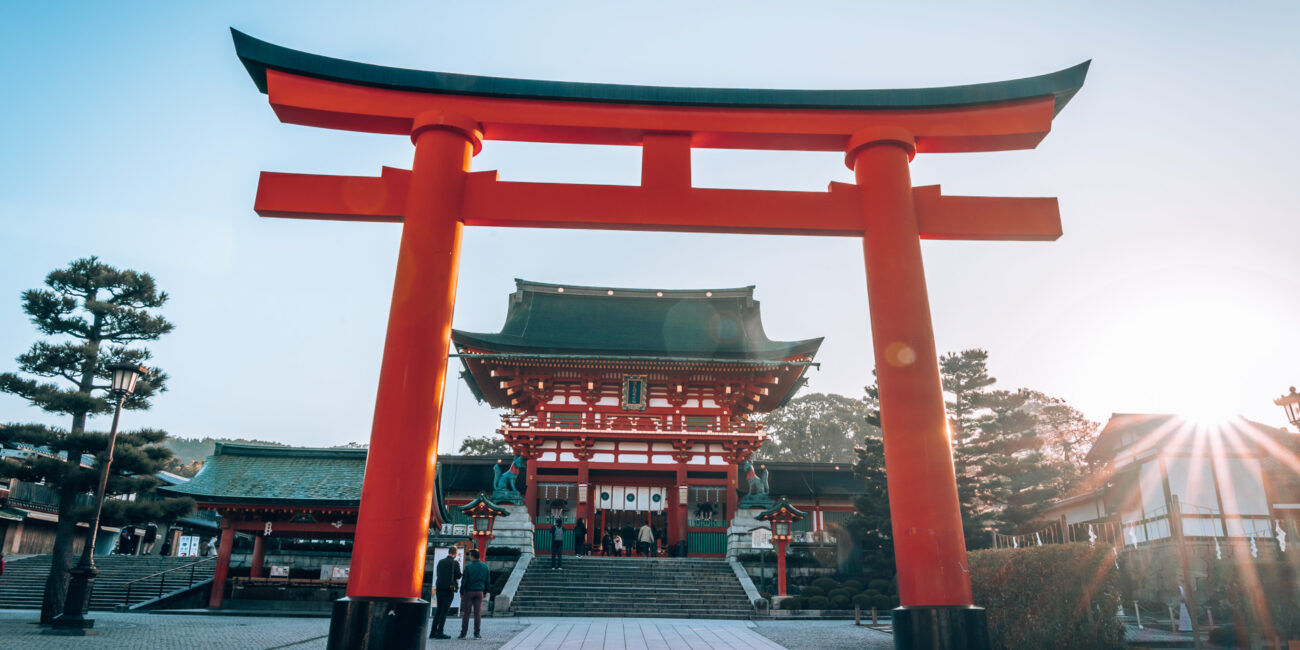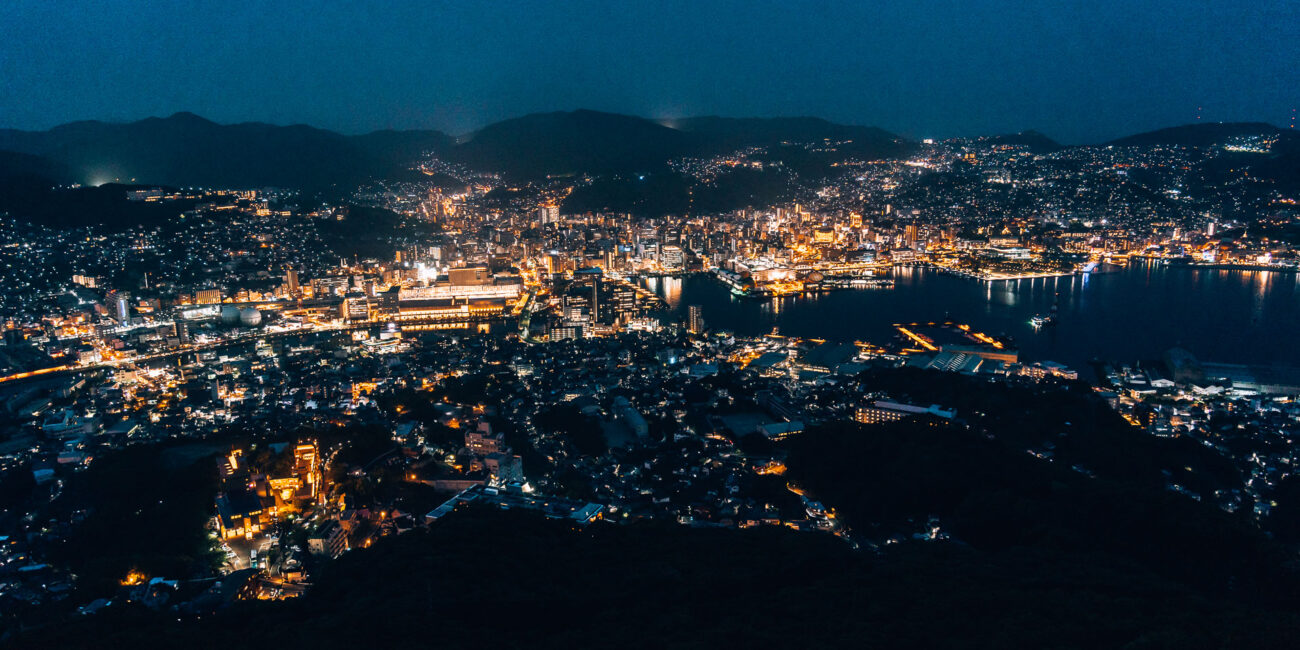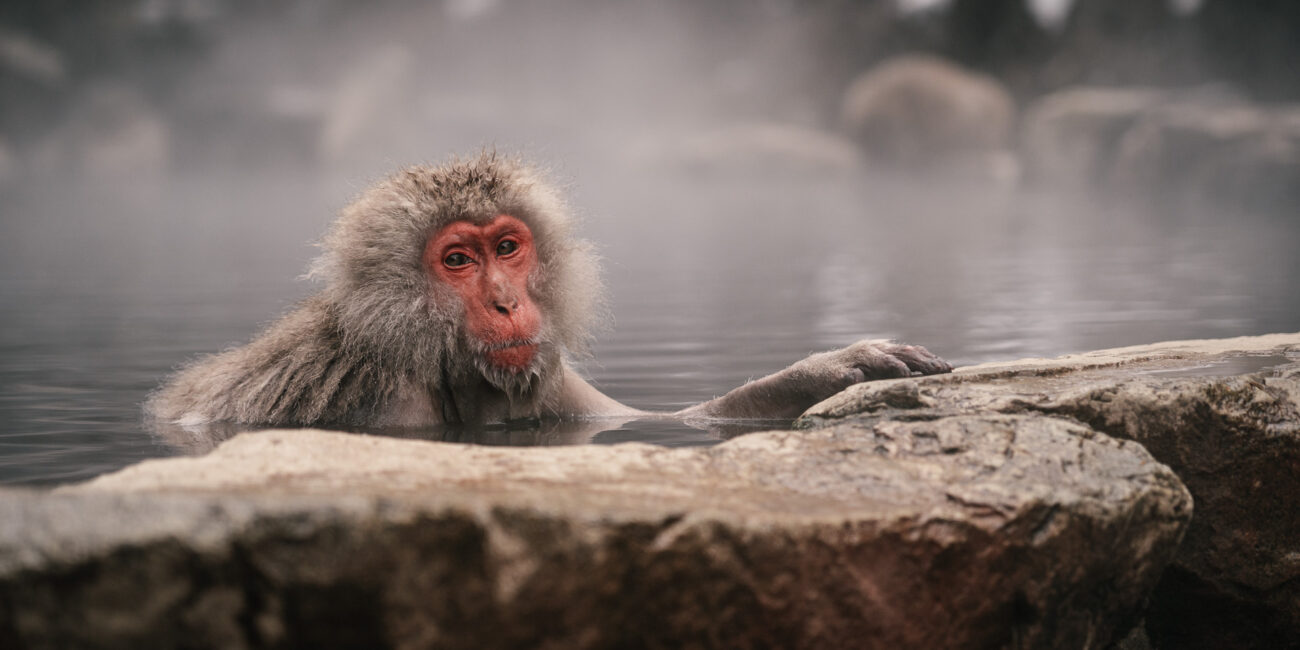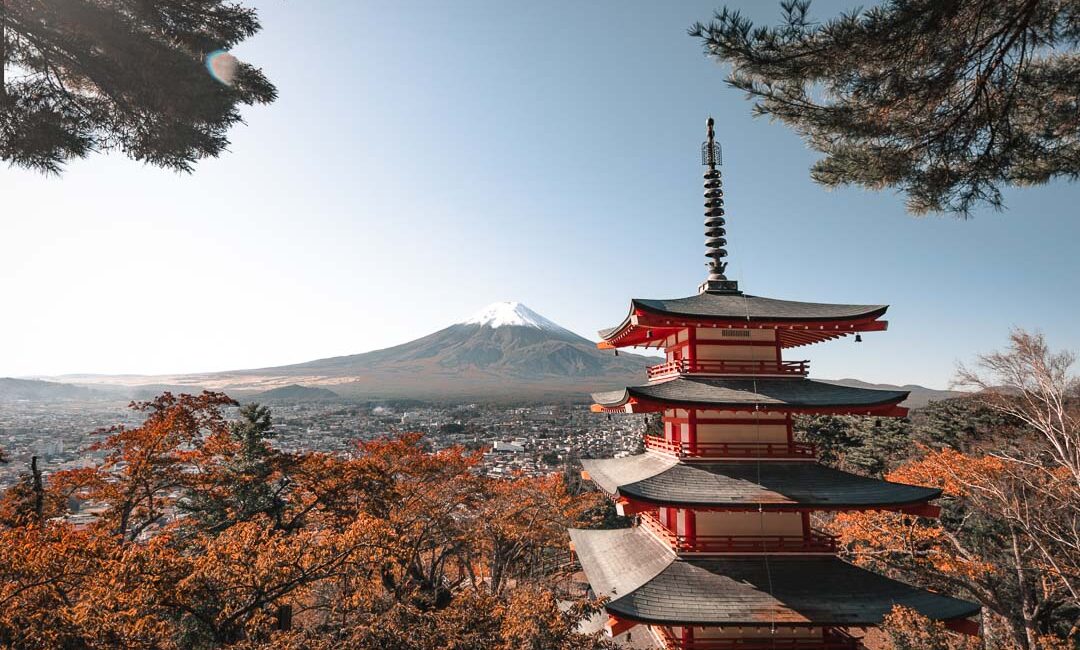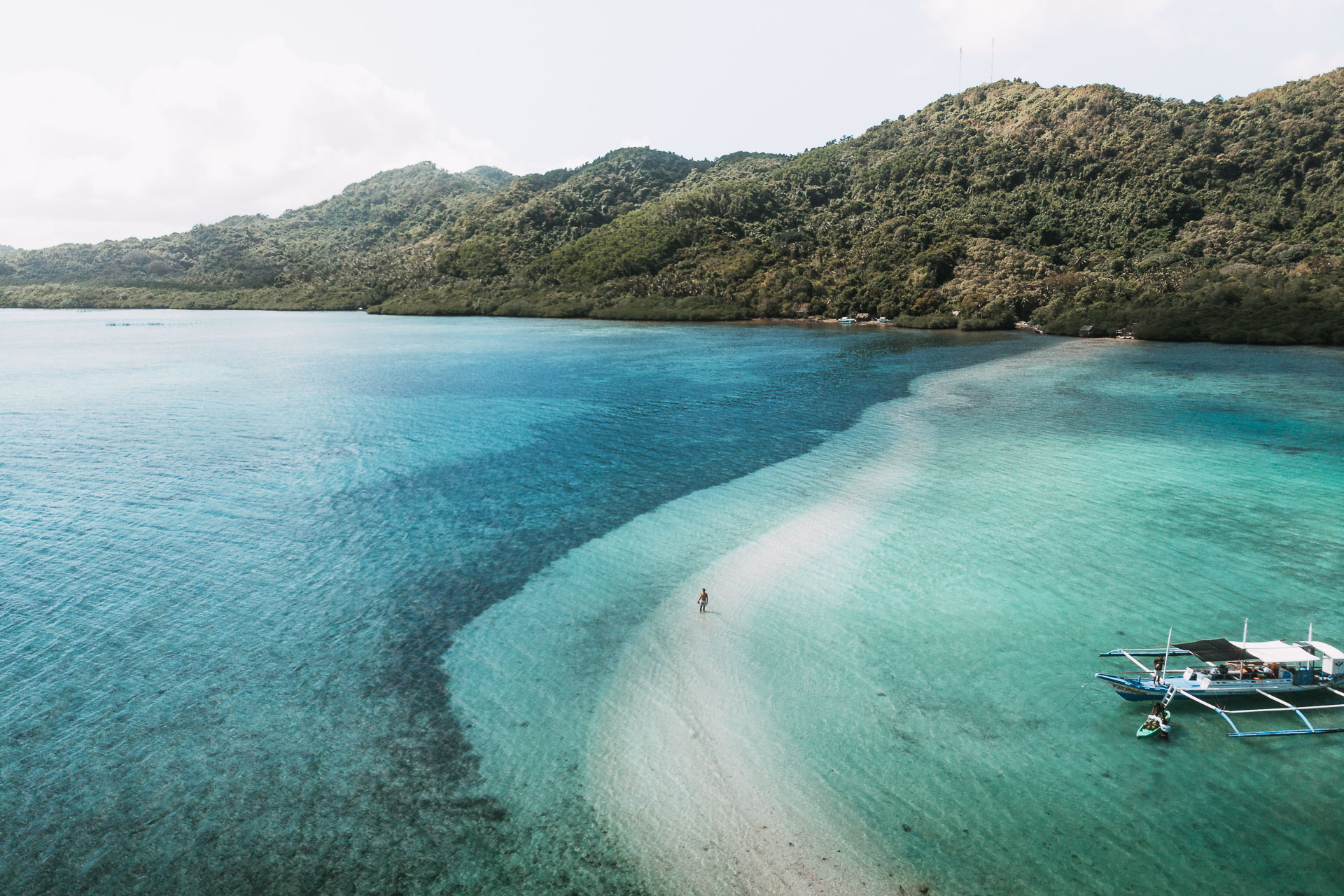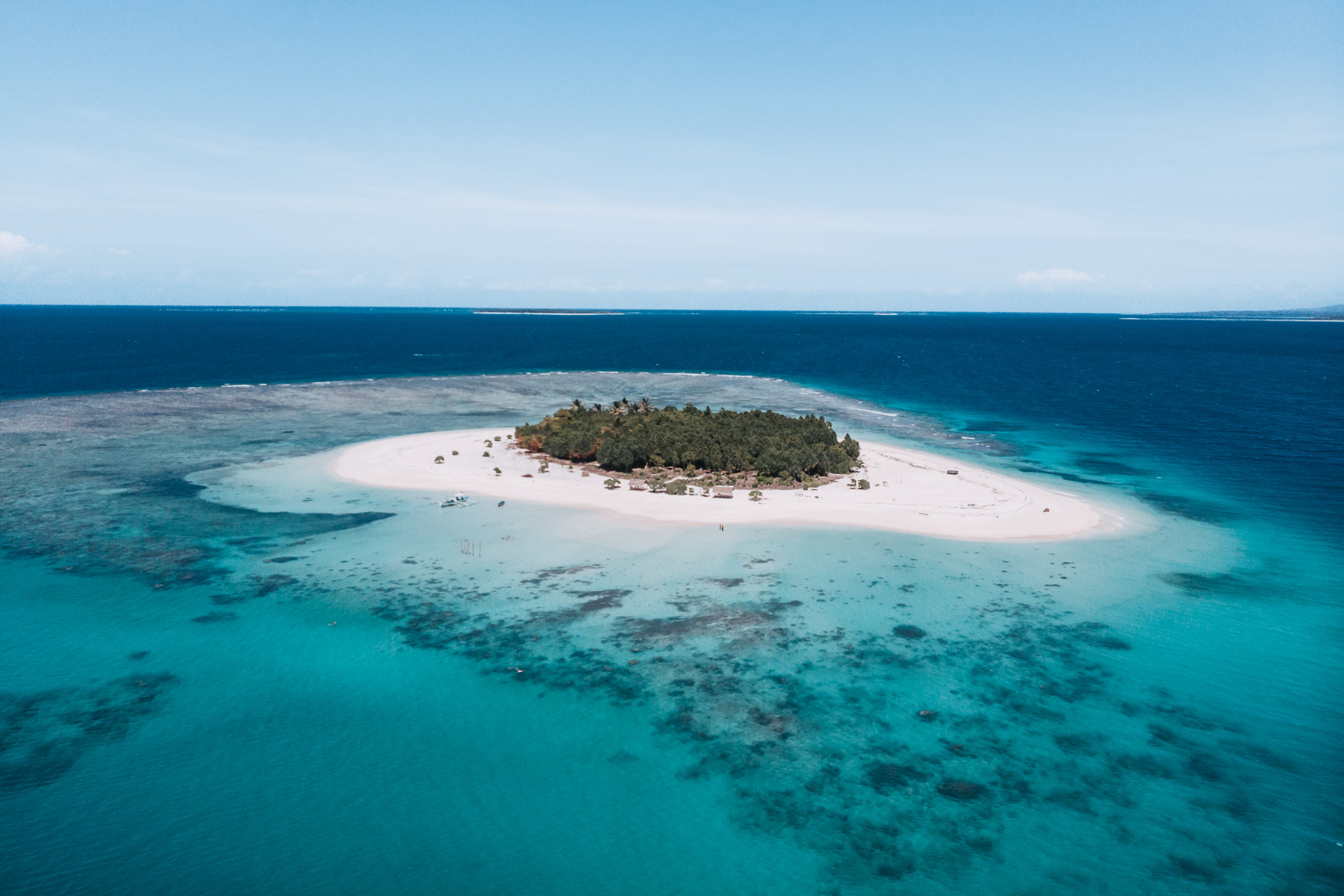The perfect Nagasaki itinerary: things to do in Nagasaki in 3 days
Disclosure
Welcome and thank you for visiting this article. Before you start reading, you need to know that some of the links on my website are affiliate links from which I receive a small commission from the sale of certain items, but the price remains the same for you.
As one of Japan’s cities that was totally destroyed by an atomic bomb in 1945, Nagasaki is now a thriving metropolis with more than 500,000 people, amazing experiences, delicious food and vibrant neighbourhoods making it a destination in Japan that should be on your itinerary.
In 2023, I spent six months living and travelling in Japan. However, Nagasaki was one of the amazing destinations in the country that was still on my bucket list and in April 2023, I made a solo trip from Fukuoka to Nagasaki.
The highlights of my Nagasaki itinerary were exploring some of the city’s most picturesque places and learning more about the city’s tragic history during World War II in the Atomic Bomb Museum.
In this article, I will tell you more about what you should not miss in this unique city, where you should definitely spend the night and many more extra tips with inspiring photos of my visit.
READ ALSO: The perfect itinerary for Japan in 3 weeks
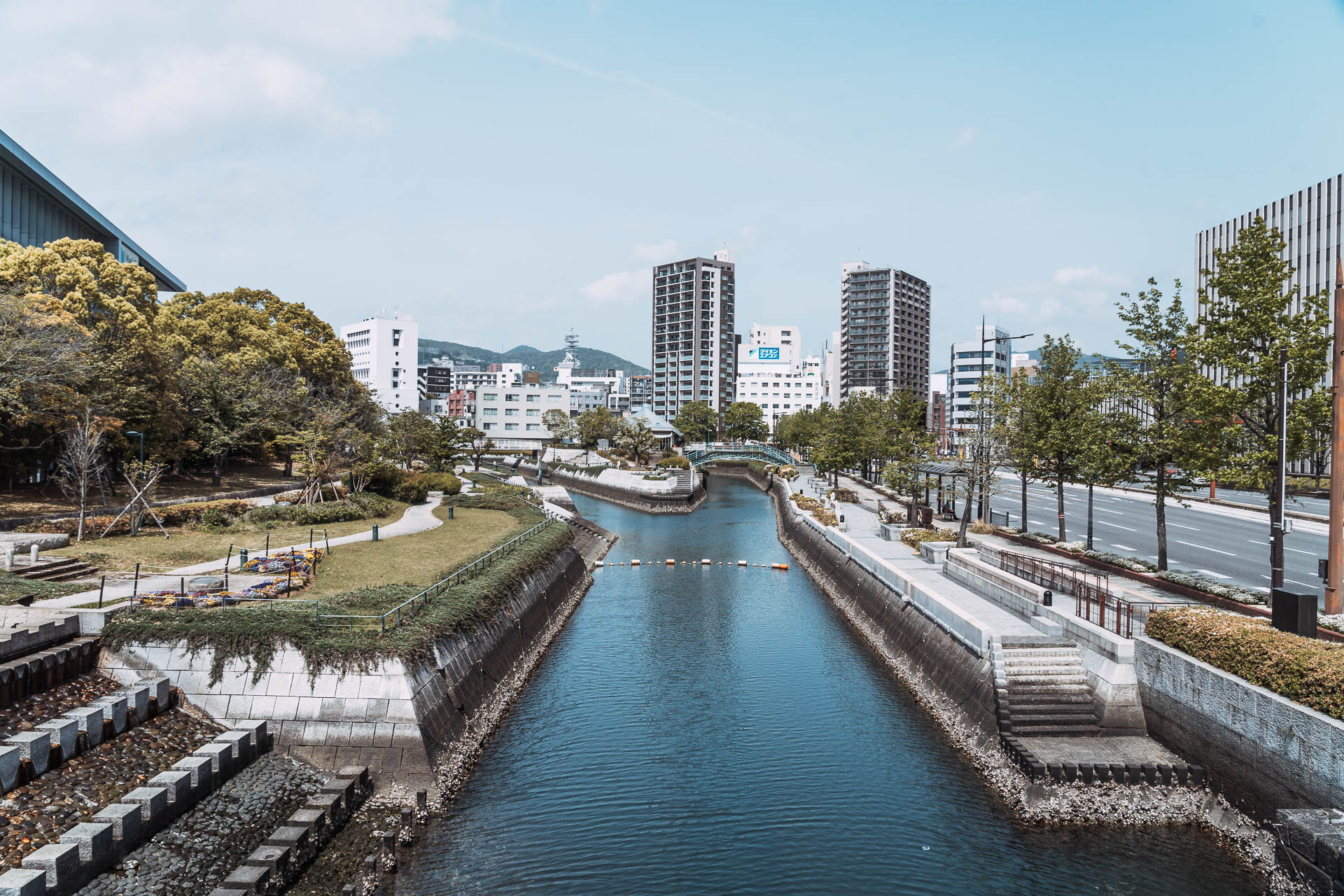
Where is Nagasaki?
The city of Nagasaki is one of the most important trading places in Japan and is also famous for its rich history. This beautiful city can be found in the Western part of the country on the island of Kyushu, only 2 hours by bus from Fukuoka.
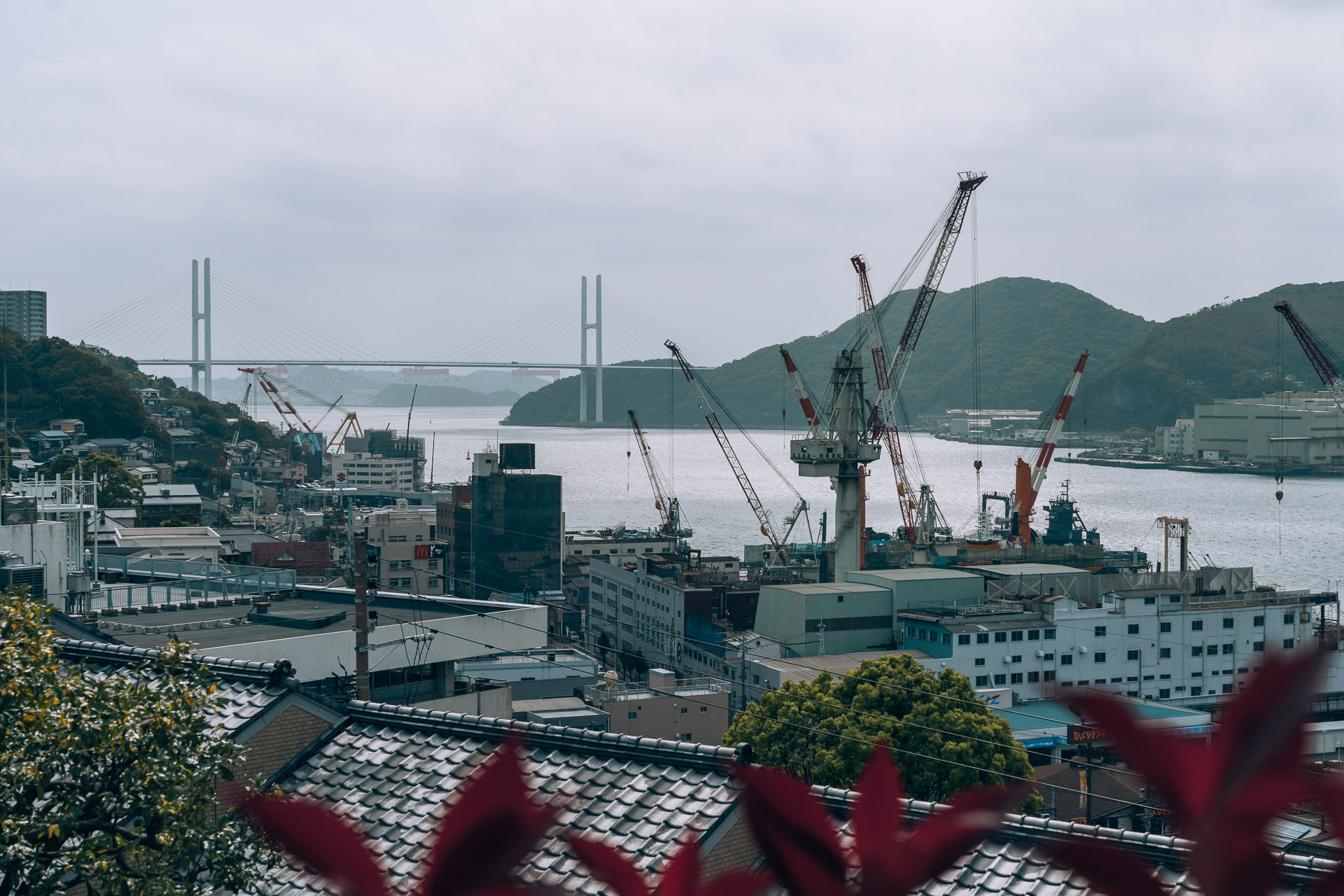
How to get to Nagasaki?
By Flight:
The majority of tourists fly into Tokyo and then take a domestic flight to Nagasaki or Fukuoka. There are flights from Europe to Tokyo for 600 Euros round trip, and you can get a domestic ticket to Nagasaki for around 60 Euros.
Personally, I prefer to fly from Amsterdam to Japan with KLM as they offer direct flights to Tokyo for reasonable prices. An alternative option is from Brussels to Seoul with Lufthansa and another flight from Seoul to Nagasaki or Fukuoka.
By Train:
With the Shinkansen and a JR rail pass, it is simple to travel to Nagasaki from any other city in Japan. This is the best and quickest way to travel long distances in Japan. It is not cheap to get a JR rail pass; but, if you have a return ticket to Tokyo and want to travel throughout Japan by train, purchasing a JR rail pass can save you money.
However, if you simply plan on exploring Kyushu, the JR Railpass for Kyushu Island is an affordable option.
By Bus:
During my visit to Nagasaki, I stayed in Fukuoka and took the highway bus from Fukuoka to Nagasaki, which took about 2 and a half hours.
The round-trip ticket cost me 5800 JPY, which is about 40 euros. The bus is very comfortable with numbered seats, a USB port, and enough legroom.
TIP: Check the website of Nishitetsu Buses for more information.
How to get around Nagasaki?
Nagasaki’s tram system makes getting around the city a breeze once you’ve arrived. All of the city’s most popular sights are accessible by one of four lines (blue, red, green, and yellow).
No matter how many stops you make, a single tram journey will cost you 140 JPY and in this article, I will explain more about how to reach every attraction in the city.
Taxis are another option for getting around, but they tend to be quite pricey.
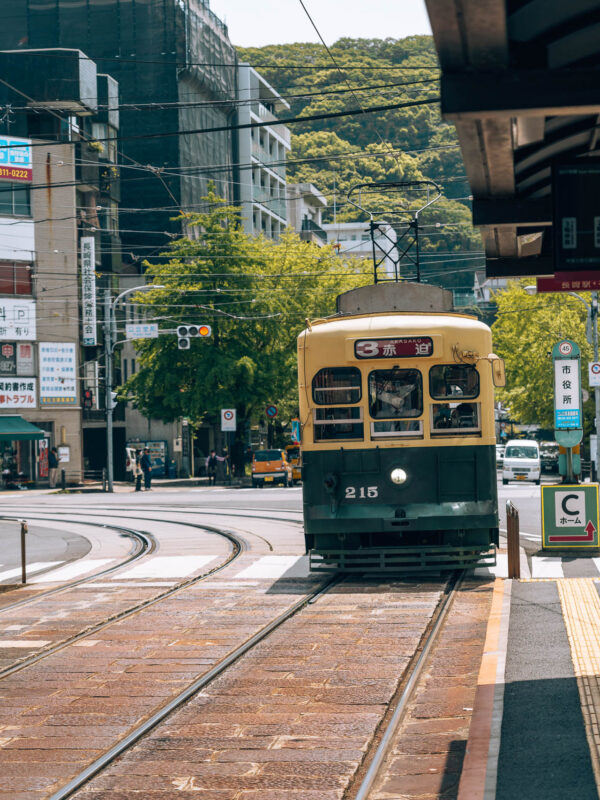
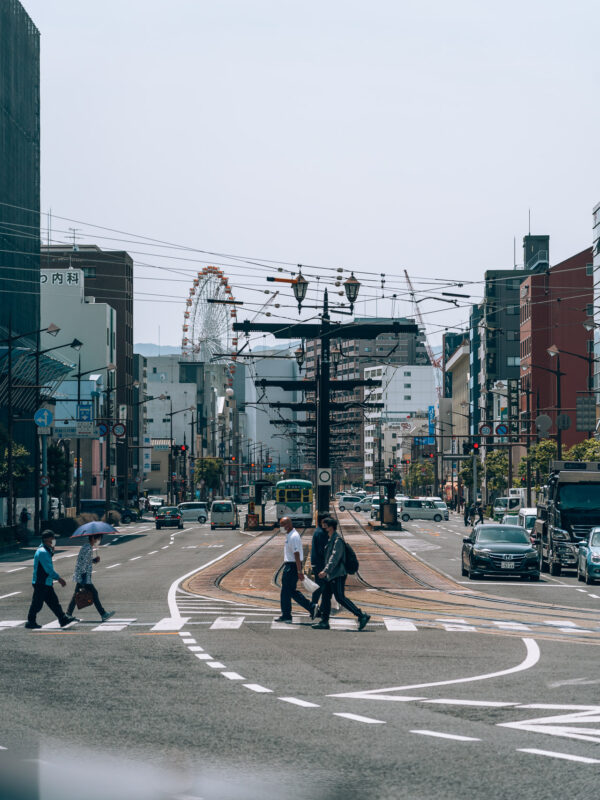
The best time to visit Nagasaki
The best time to visit Nagasaki depends on what you’re looking for during your trip. Spring and Autumn are the most popular times of the year with many tourists and higher accommodation prices.
Spring (March – May):
This is a great time to visit if you love beautiful flowers. Nagasaki becomes filled with cherry blossoms, which are pink and delicate. It’s a magical sight to see! You can visit parks and gardens like Glover Garden and Nagasaki Peace Park to enjoy these blossoms. Spring in Nagasaki is also a good time for taking pictures and experiencing a traditional Japanese custom called hanami, which is all about enjoying the beauty of cherry blossoms.
Summer (June – August):
If you like festivals and warm weather, summer is the best time for you. It’s also a good time to explore Nagasaki’s beaches and try delicious seafood but rainshowers may occur often.
Autumn (September – November):
Nagasaki is peaceful and picturesque during autumn. The temperature becomes cooler, and the leaves on the trees change into beautiful colors like red, orange, and gold. Gardens such as Suwa Shrine and Nagasaki Mt. Inasa Observatory offer amazing views of autumn foliage. It’s a pleasant season to visit historical sites like Nagasaki Peace Memorial Hall and Oura Church without too many tourists around.
Winter (December – February):
If you enjoy winter landscapes and happy celebrations, Nagasaki in winter is perfect for you. Although it can get cold, the city becomes a magical wonderland with beautiful lights decorating the streets and parks. In February, Nagasaki Lantern Festival takes place, where you can see stunning light displays and traditional lanterns.
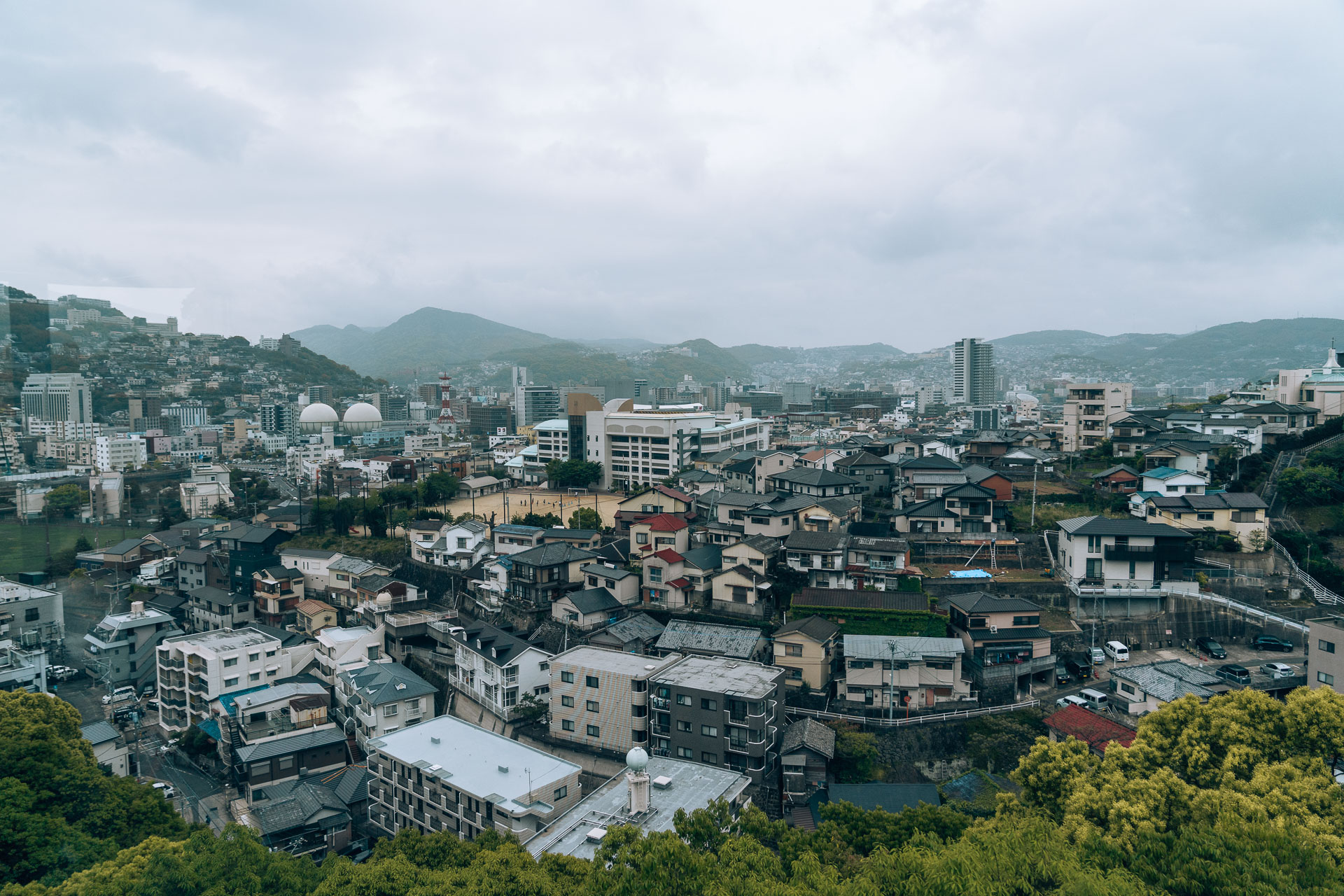
Where to stay in Nagasaki?
When it comes to finding accommodation in Nagasaki, there are various options to suit different budgets and preferences. From luxury hotels to budget-friendly hostels, there is something for everyone.
Prices for luxury hotels in Nagasaki can range from around 150€ to more than 500€ per night, depending on the location and season.
Hostels or Pod hotels are budget options and these places have dormitory-style rooms or private rooms at reasonable prices. Prices for hostels in Nagasaki can start as low as $20 per night.
I stayed at the First Cabin Hostel, where you share a room with up to 50 others but you get your own little “pod” to sleep in. You aren’t allowed to call or make too much noise to respect the peace of others.
Businessmen who are just in town for a few days usually stay in this kind of accommodation. The First Cabin Hostel also featured its very own onsen, which served as a wonderful place to relax and unwind after a long day spent discovering Nagasaki.
READ ALSO: 21 Best hotels in Japan
Nagasaki 3-day itinerary
Day of Arrival
I took at 10 am the Nishitetsu Highway bus from Fukuoka’s Hakata Station to Nagasaki and even though the trip took about two hours, it was really comfortable.
Once you arrive at the bus stop in Nagasaki, you can either take the tram or walk to your accommodation depending on where your hotel is located.
I chose to walk so I could soak up the city’s vibrance and it took me around 20 minutes from the bus station to the First Cabin Hostel. As soon as I dropped off my bags at the hostel, I was ready to discover more about this fascinating city.

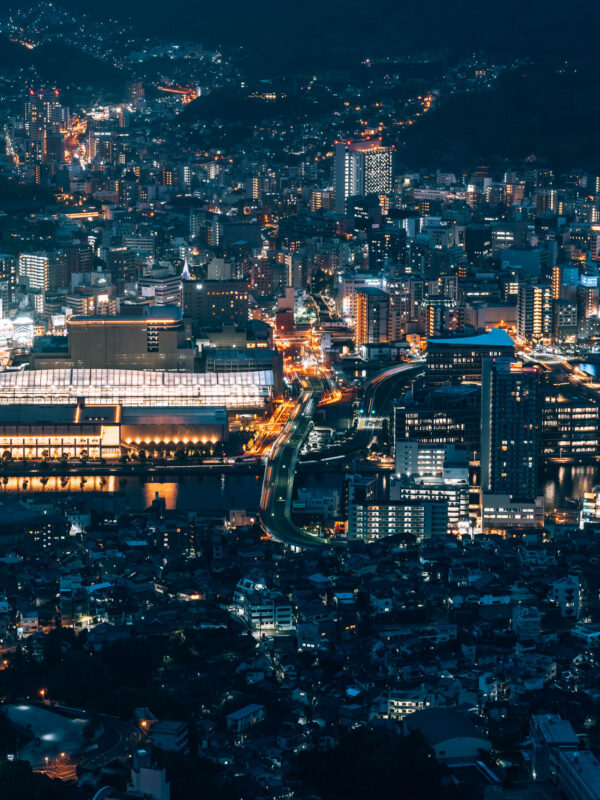
Dejima Island
The first place I decided to explore was Dejima Island as this historical place offers a fascinating glimpse into Japan’s rich cultural and trading history. Once an artificial island in the bay of Nagasaki, Dejima played a pivotal role as the only point of contact between Japan and the outside world during its isolationist period.
Walking through the cobblestone streets, you’ll feel transported back in time as you explore the meticulously restored buildings that once housed Dutch traders.
From traditional Japanese houses with sliding doors to redbrick European structures, the architectural mix is both captivating and unique. Take your time wandering through museums that house stunning exhibits detailing the exchange of culture, goods, and knowledge between Japan and the West.
Don’t forget to climb up to the observation deck for panoramic views of Nagasaki Bay and ponder upon centuries of cross-cultural connections at this historically significant location!
ENTRANCE FEE: You’ll need to pay an entrance fee of 520 JPY to enter this beautiful place.
TIP: After you enter the site, go to the left where you will find a miniature version of Dejima. This gives you a perfect overview of the Island.
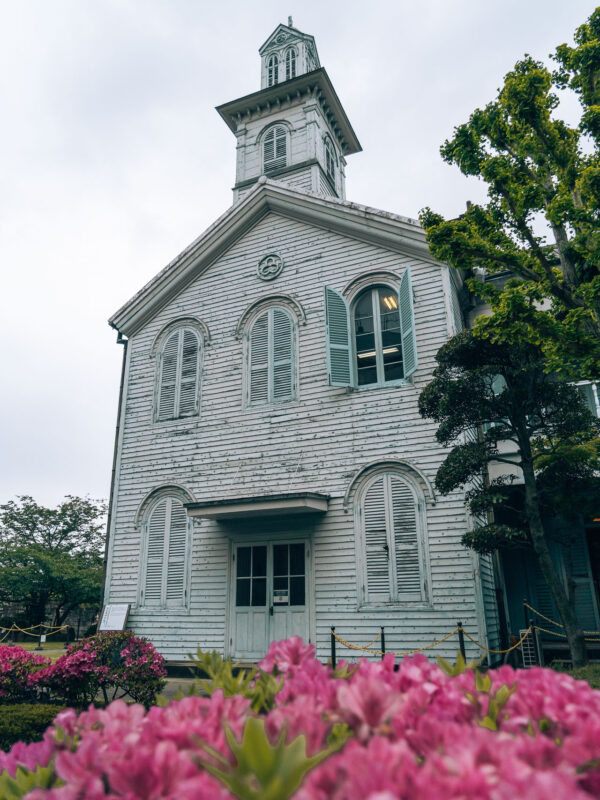
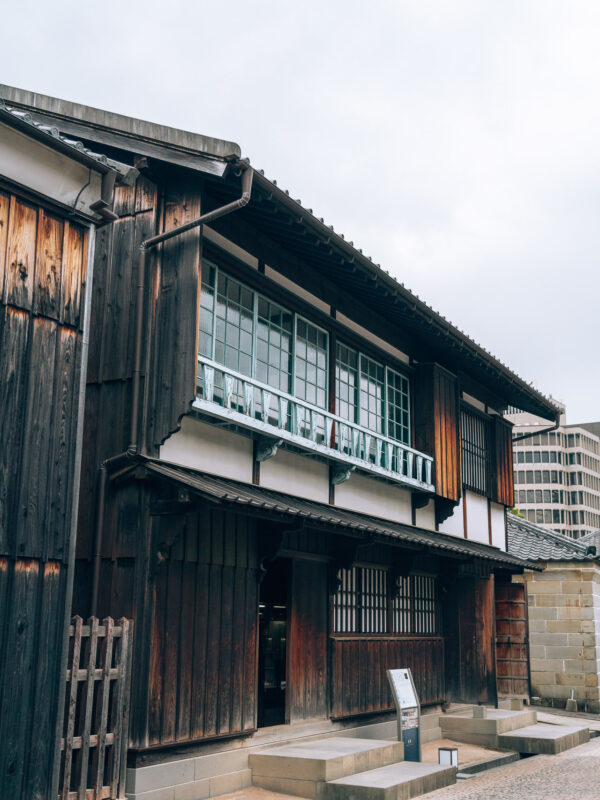
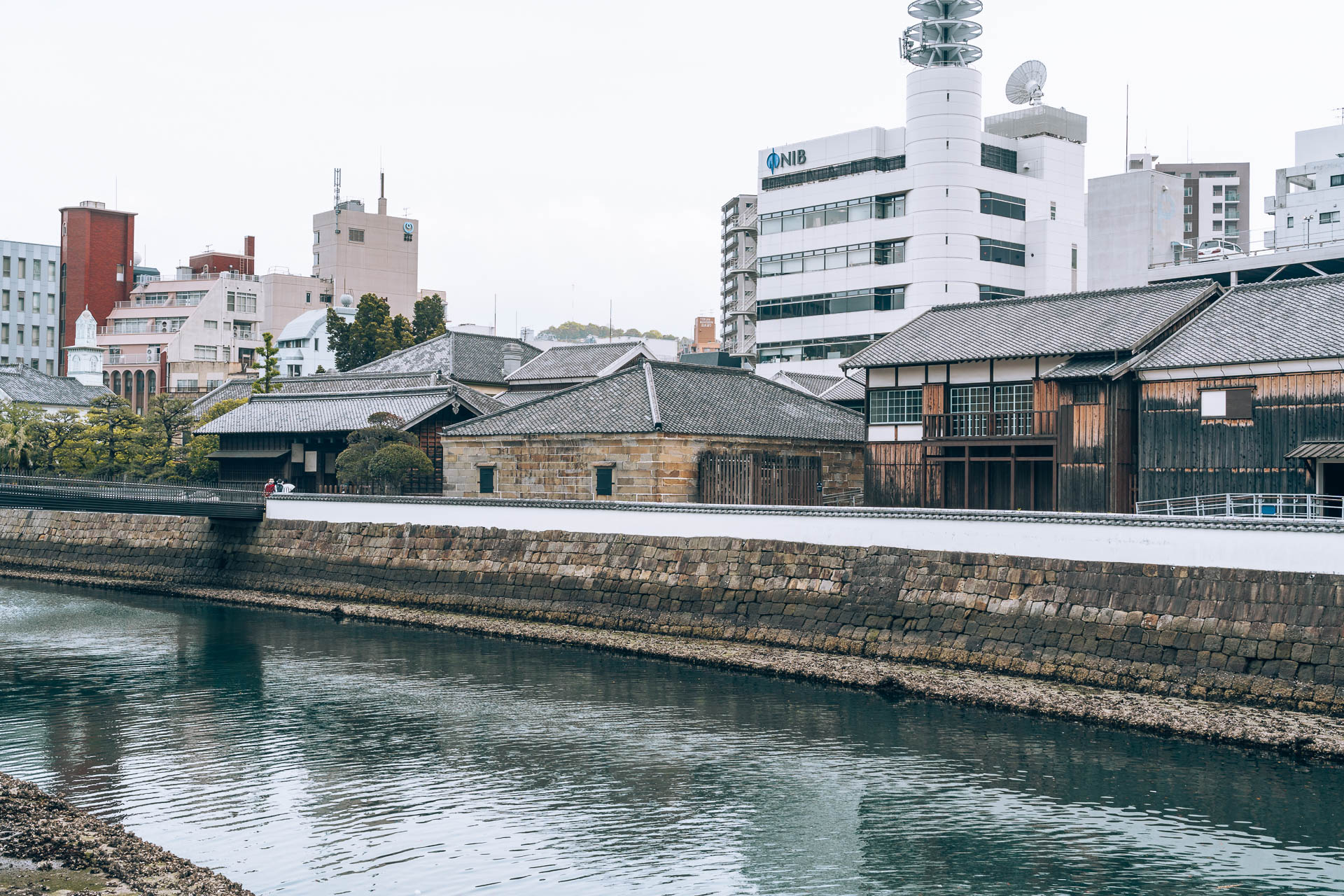
Chinatown Nagasaki (during daytime)
After spending nearly an hour at Dejima Island I decided to continue and visit to Chinatown is an absolute must! Located in the heart of the city, this vibrant and bustling district offers a unique cultural experience. As you stroll through its narrow streets adorned with traditional Chinese decorations, your senses will be overwhelmed by the sights, sounds, and aromas that fill the air.
Take some time to explore the various shops offering an array of authentic Chinese goods, from delicate porcelain figurines to exotic spices and teas. And when hunger strikes, don’t miss out on tasting delectable Chinese delicacies such as steamed dumplings and barbecued pork buns at one of the many street food stalls or restaurants.
Immerse yourself in this vibrant melting pot where Japanese and Chinese cultures seamlessly blend.
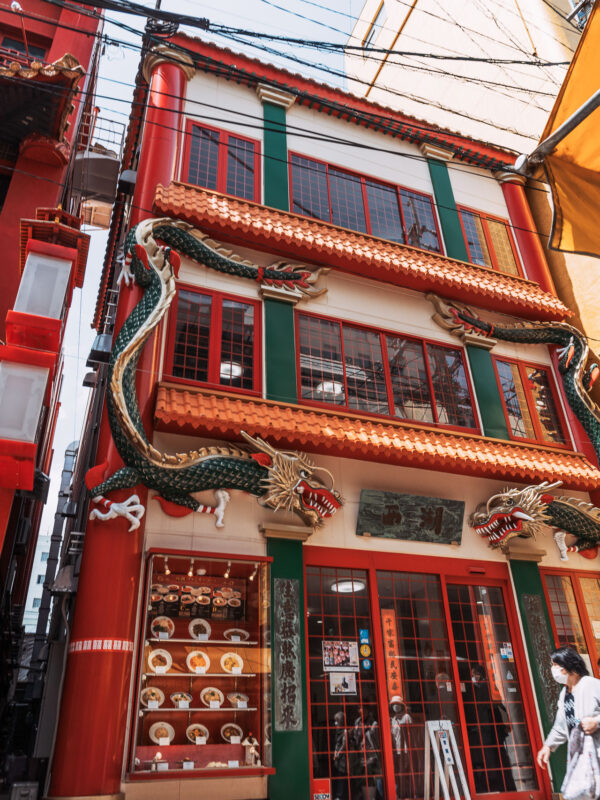
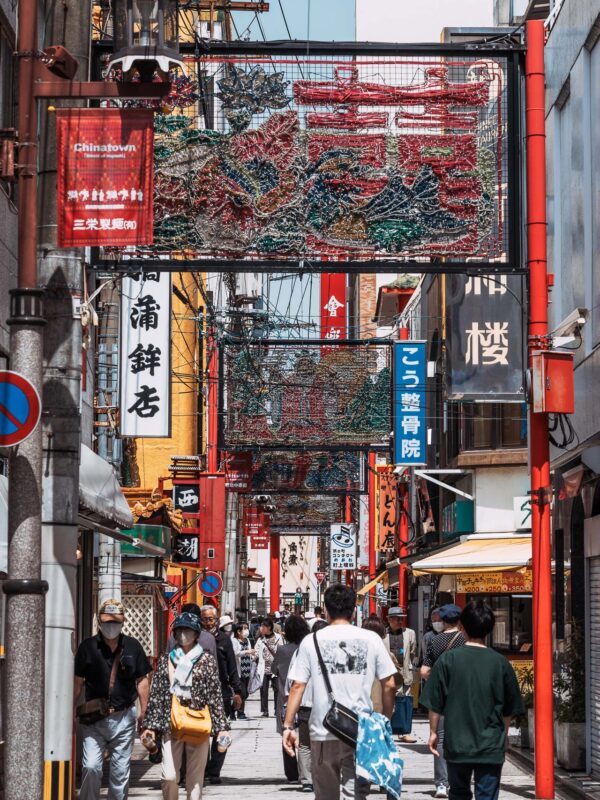
Nagasaki Seaside Park
After making my way through Chinatown, I strolled through the Nagasaki Seaside Park, from which I could see the bridge and an observation platform as well as a breathtaking panorama of one of the world’s most significant trading ports.
The park is beautiful on its own with greenery, flowers beautiful canals. A picnic here is a great way to unwind and enjoy the scenery.
TIP: The Nagasaki Art Museum and the Dejima Warf are located in the park and are amazing places to explore as well. I didn’t have the time to visit the art museum however the Dejima Warf is worth to stroll along.
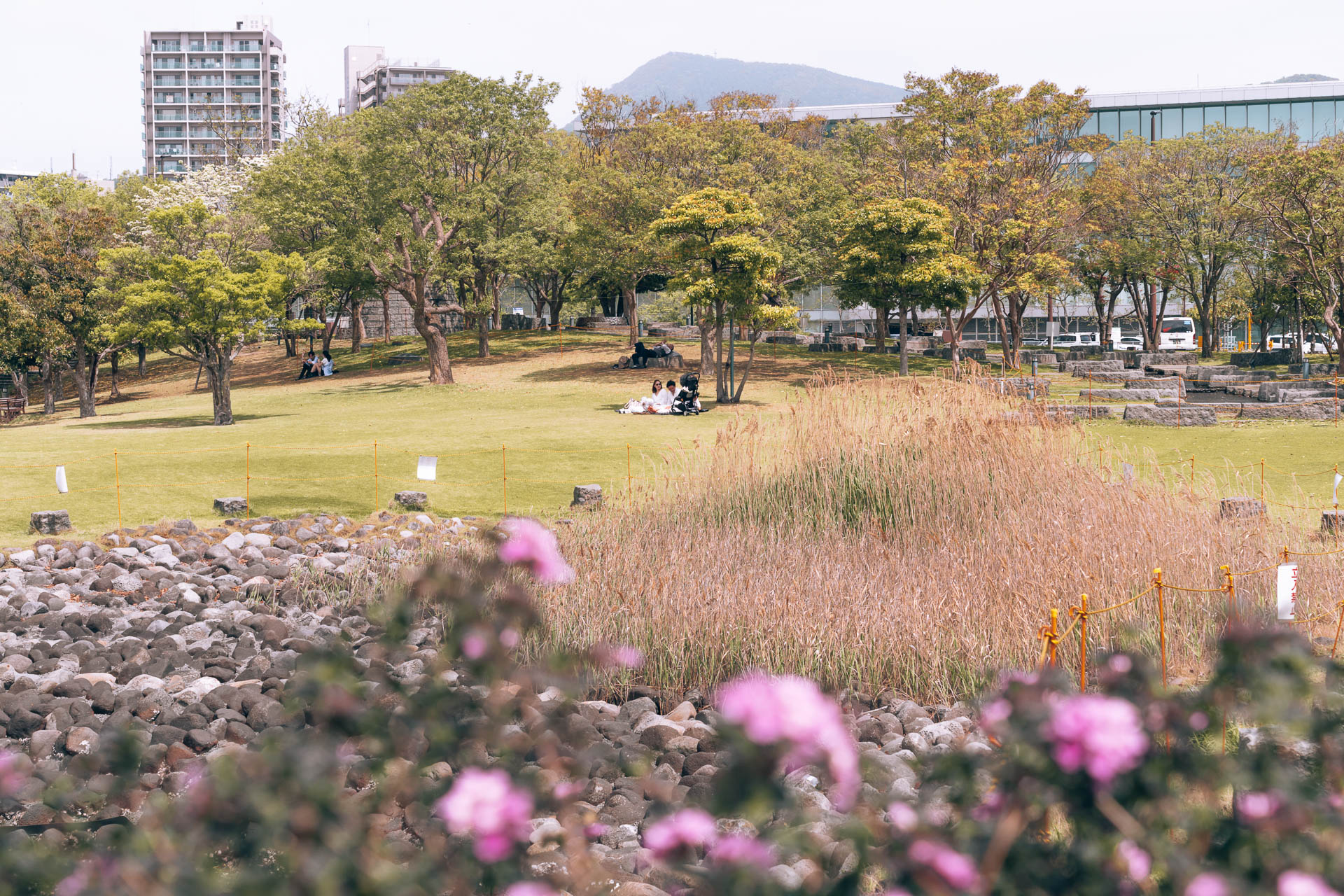
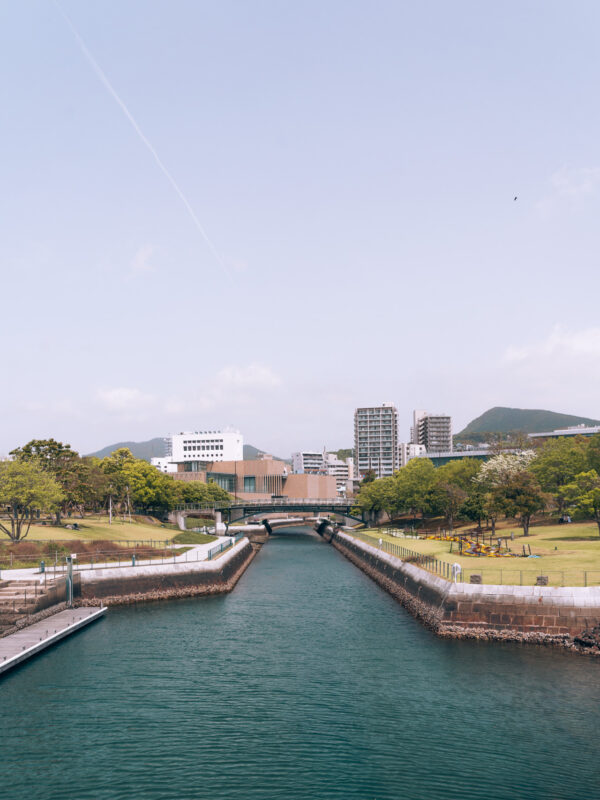
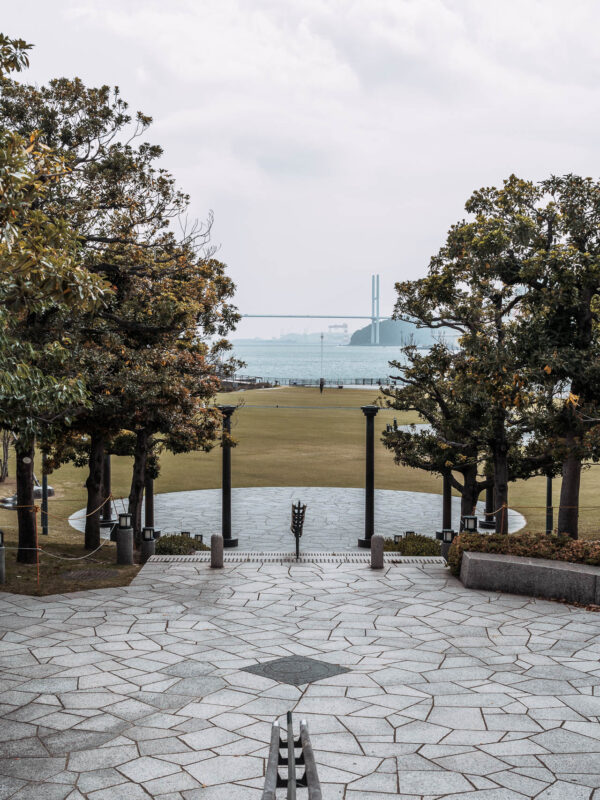
Dutch Slope
This little gem is a unique part of the city that holds a lot of history. Back in the 17th century, when Japan was under strict isolationist policies, only the Dutch were allowed to trade with them. The Dutch slope was where the Dutch traders used to live and work.
Nowadays, it’s a charming neighbourhood filled with European-style buildings that still retain their old-world charm. As you stroll through its narrow streets, you can’t help but feel like you’ve been transported back in time. It’s amazing how this place has preserved its heritage throughout the years.
Definitely make sure to stop by one of the cosy cafes, old-Western-styled houses or quaint shops along the way – who knows what hidden gems you might find!
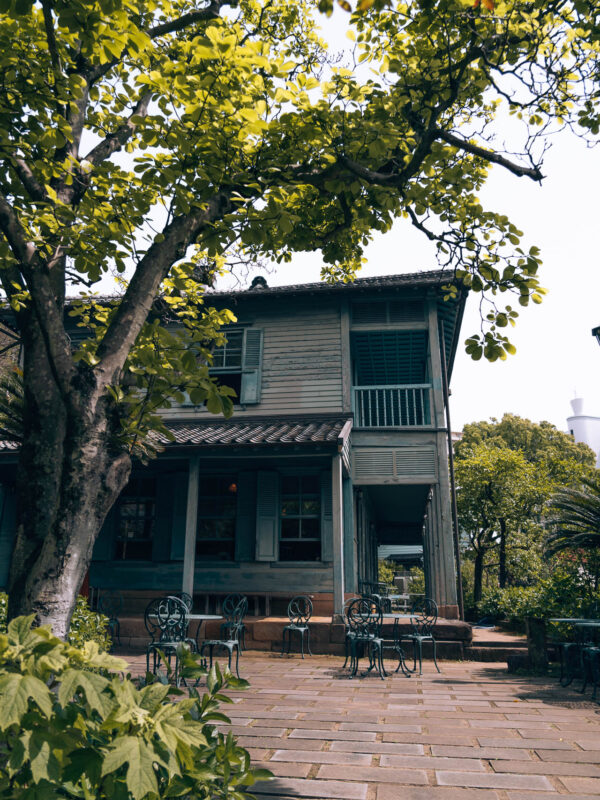
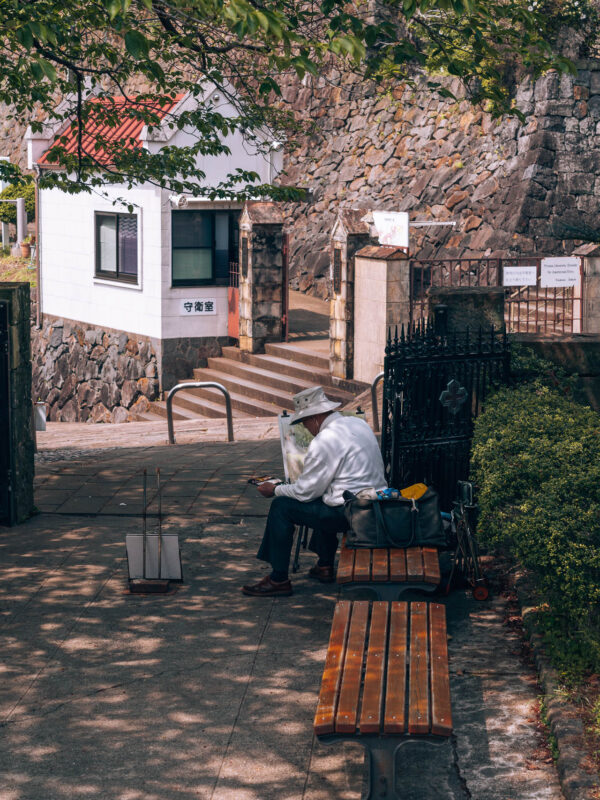
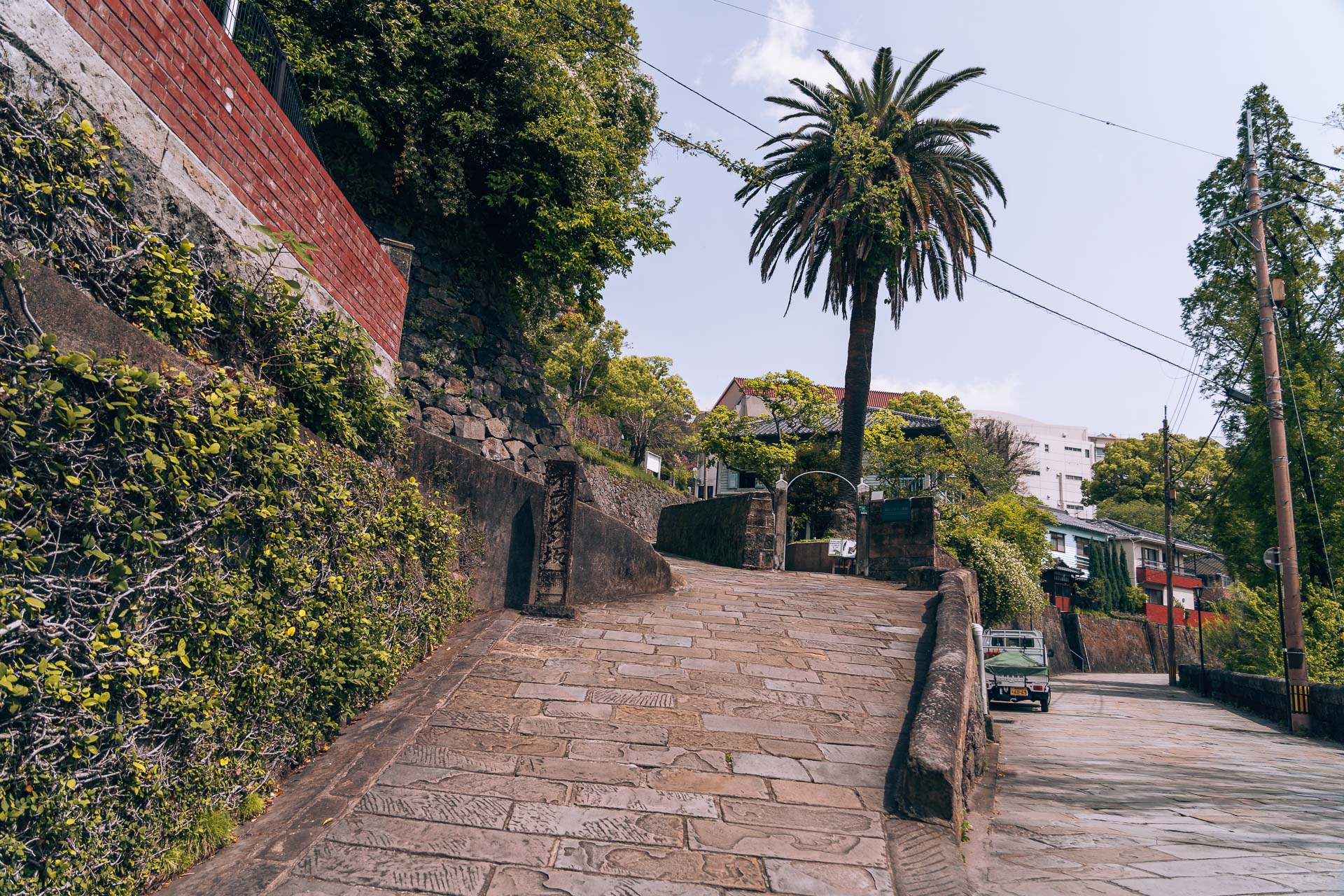
Oura Church
On the way from the Dutch slope to the Oura Church and De Glover garden, you walk along the tram track and some nice streets with souvenir shops.
As the oldest church in Japan, it holds great historical significance with its gothic-style architecture is simply breathtaking. Stepping inside feels like stepping back in time as you stroll through the nave, marvelling at the stunning frescoes adorning the walls and ceiling.
The church’s interior is equally impressive, boasting ornately decorated altars and delicate wood carvings. Take a moment to soak in the tranquillity of this sacred place, offering a respite from the bustling city outside.
Whether you are religious or not, a visit to Oura Church promises an unforgettable experience sure to leave an indelible mark on your heart.
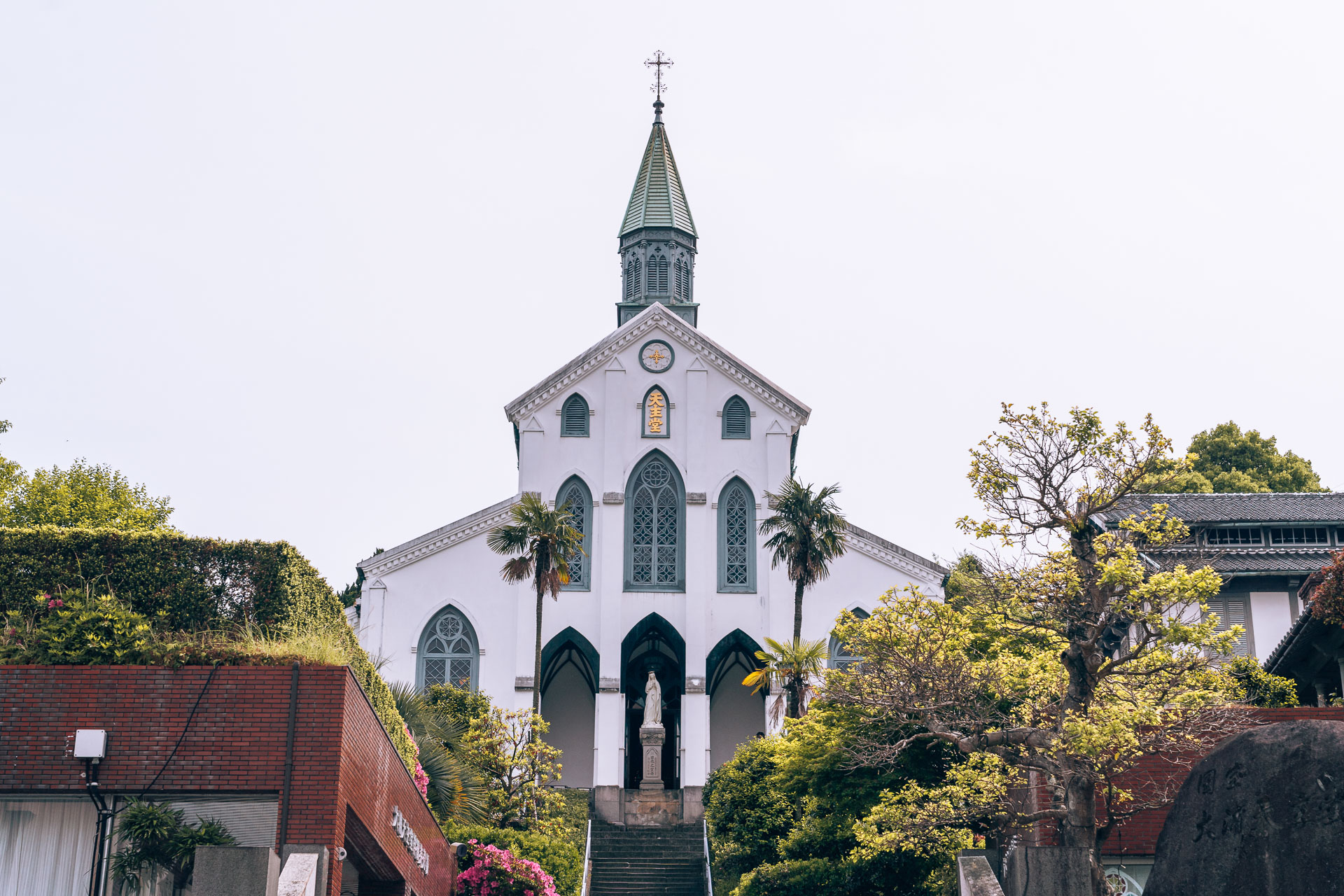
Glover Garden Nagasaki
It was pretty crowded at the Oura Church so I decided to move on and made my way into the Glover Garden through the stairs.
The Glover Garden is a picturesque hilltop park that offers a dazzling blend of Western and Japanese architecture, showcasing the city’s historical ties with foreigners during the Meiji period.
Follow the pathway and take the elevators to the top of the park where you’ll find one of the most beautiful Victorian-styled houses and charming gardens adorned with vibrant flowers.
Another highlight of the park is undoubtedly the Former Glover Residence, which is near the exit of the park and it’s Japan’s oldest western-style wooden building. Inside, you’ll discover intricate detailing and artefacts that provide insight into Japan’s early relationship with the Western world.
Additionally, don’t miss out on the panoramic views of Nagasaki harbour from the observation deck or the statues dedicated to notable figures such as Scottish merchant Thomas Blake Glover.
Exploring Glover Garden promises an enchanting experience that seamlessly combines East and West within this vibrant Japanese city.
ENTRANCE FEE: The entrance ticket cost 520 JPY / 3,3€ per person.
TIP: You can rent traditional Japanese clothes at the Mishubushi House and head into the house to have a magnificent view over the garden.
TIP:Take the escalator back up and exit the park near the Mitsubishi House, rather than using the exit beside the Former Glover Residence. From here, you can explore the spectacular Glover Sky Road.
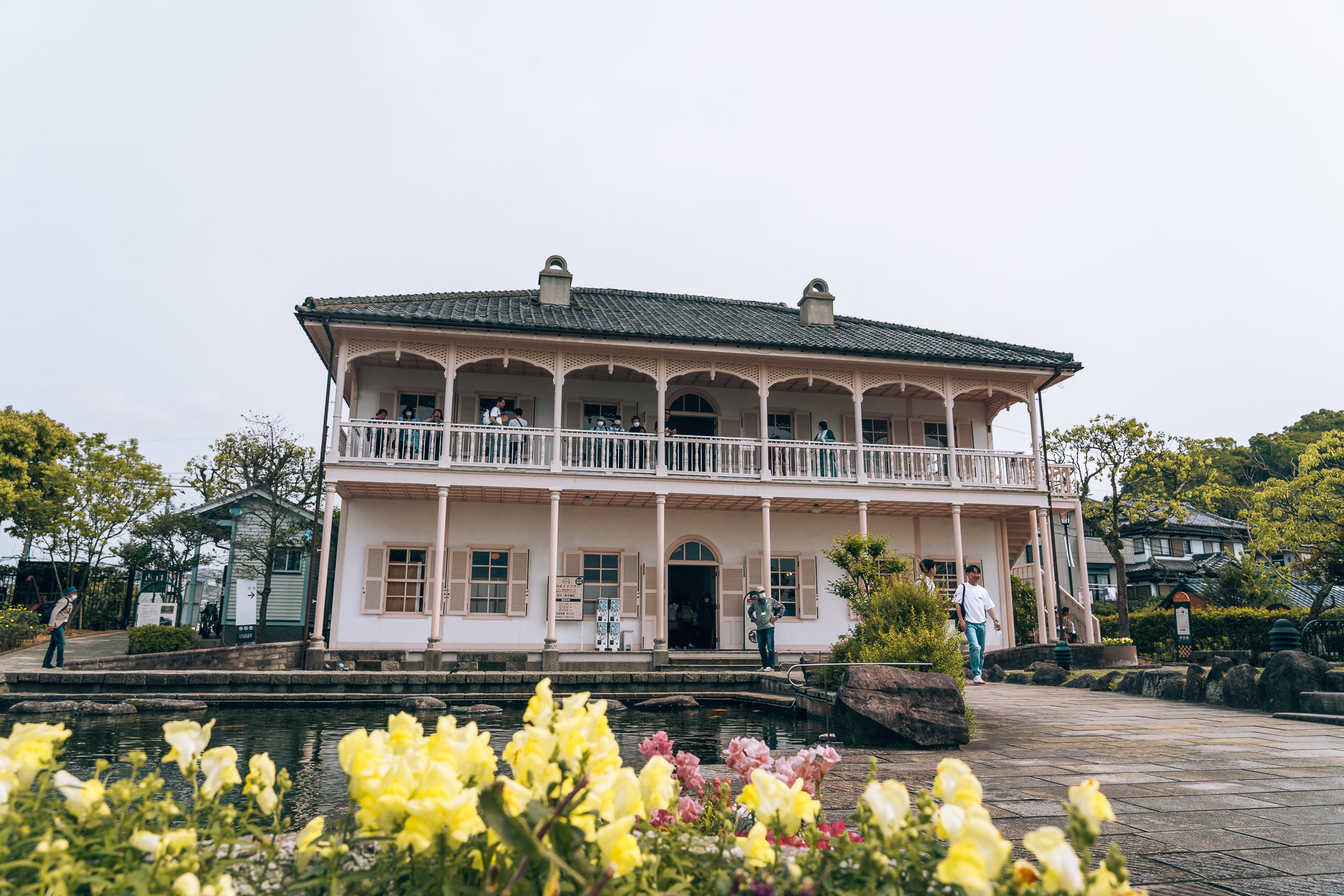
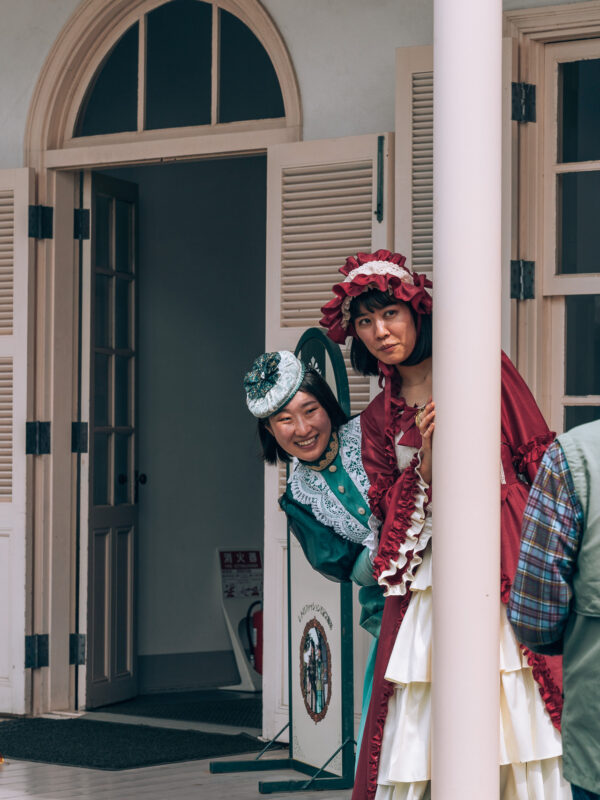
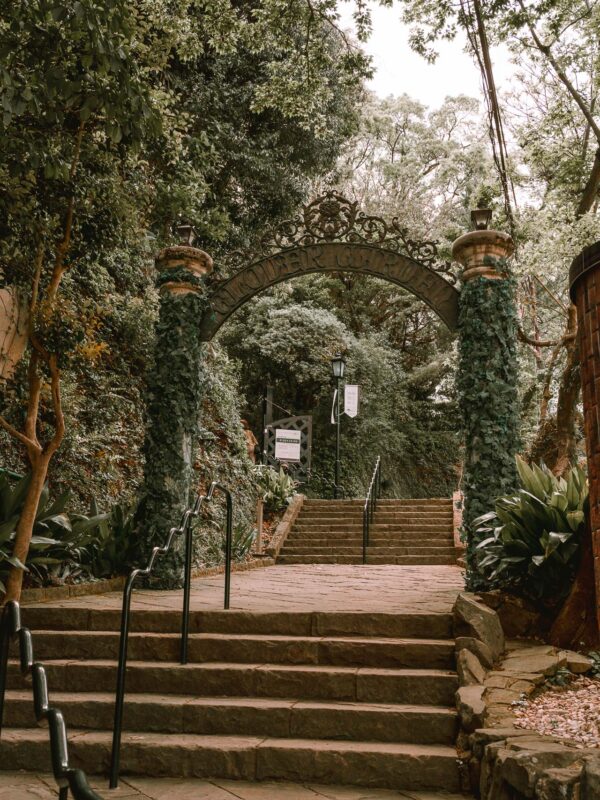
Glover Skyroad & the Vertical Elevator
Immediately after exiting the park at the top, you should turn to the left and take the vertical elevator down. While you wait, you can take in the breathtaking scenery.
Once the elevator reaches a twisting road a few levels down, continue right towards the other elevator that will take you to the main street where you can jump on the tram from Ishibashi Station.
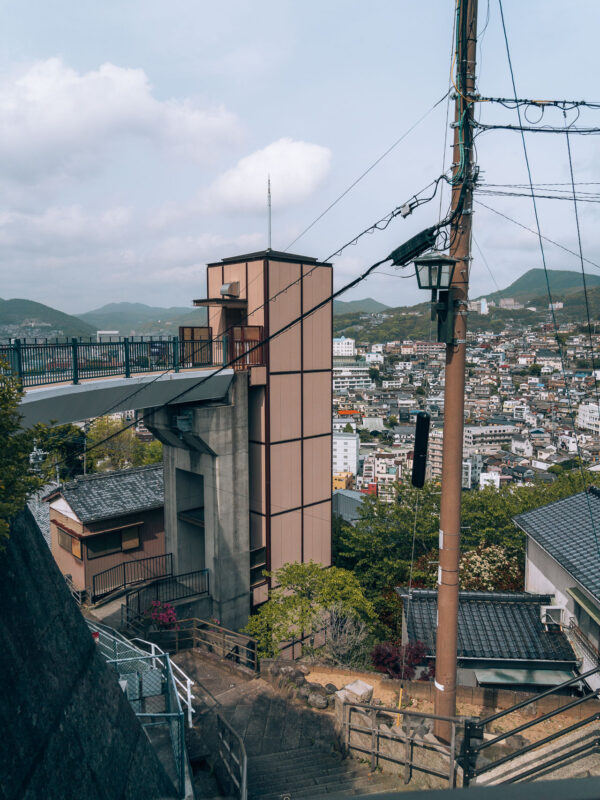
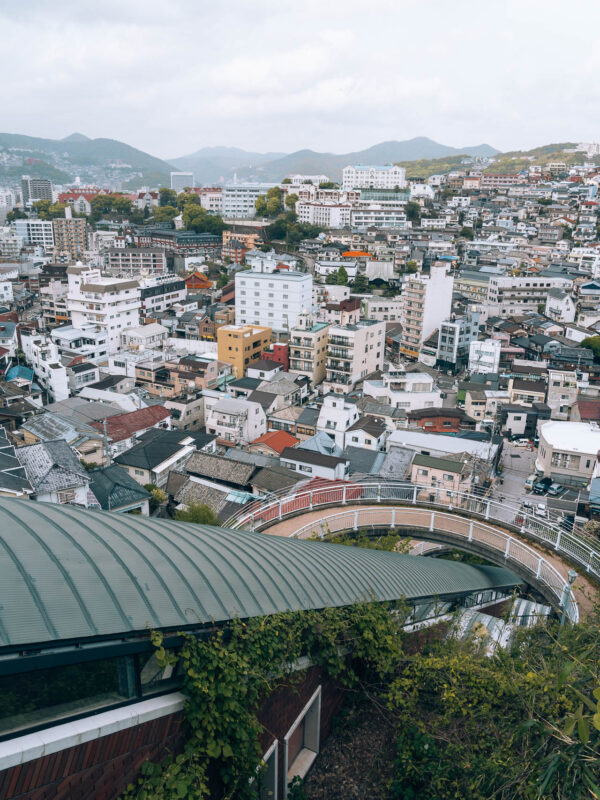
Shianbashi at night
After visiting the Glover Gardens, I hopped on the tram back to the hostel to relax in the lovely Onsen and grabbed something to eat from the nearby konbini.
Actually, Nagasaki comes alive at night, so I decided to go around the surrounding areas and taste the local nightlife.
As you stroll through the busy streets, you’ll be captivated by the colourful neon signs that illuminate the area. Restaurants, bars, and small pubs line the narrow lanes, inviting visitors to indulge in delicious local cuisine and refreshing drinks.
Whether you’re seeking traditional Japanese dishes or international flavours, Shianbashi has something to satisfy every visitor. The atmosphere is laid-back and friendly, making it an ideal spot to meet friends or simply soak up the bustling energy of the city.
Don’t forget to try Nagasaki’s famous champon noodles – a flavorful speciality that will leave your taste buds craving for more. With its blend of culinary delights and lively ambience, exploring Shianbashi at night promises an unforgettable experience.
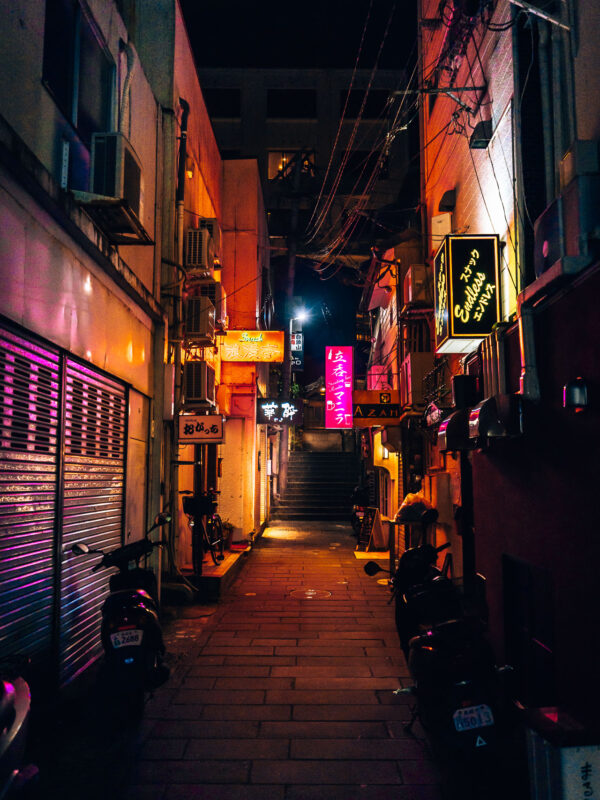
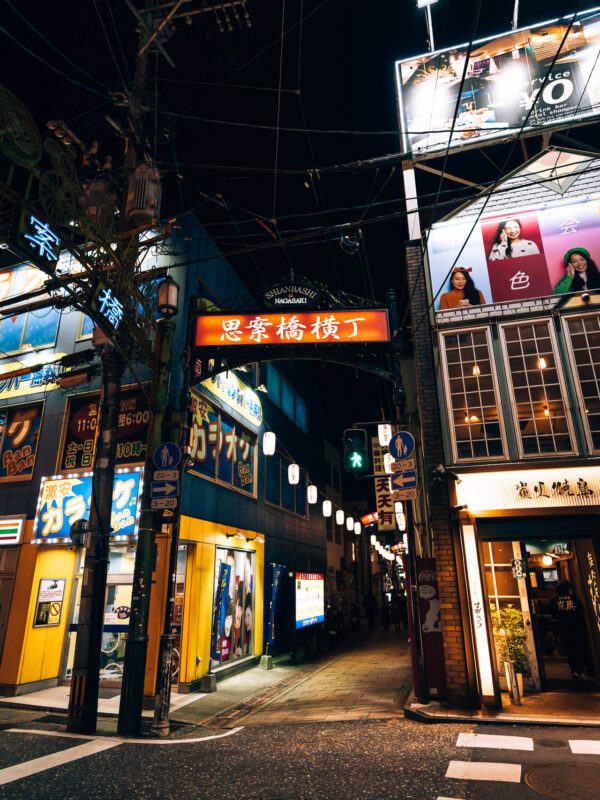
Day 2:
Atomic bomb Hall en Museum
I hopped in the morning on the tram to the Atomic Bomb Museum and the Atomic Bomb Hall as these are two of the most fascinating highlights in this remarkable city.
Exploring the Nagasaki Atomic Bomb Museum in the morning is respectful and immersive and gives you plenty of time to explore the other highlights of Nagasaki later in the day.
Inside the Atomic Bomb Hall, they honour the memories of those who passed away during the Atomic Bomb and you’ll find all the names in the big glass pillars, while in the Atomic BombMuseum, you’ll find a massive collection of remains, survivor stories, and informative exhibitions that explain the tragedy and the city’s incredible journey toward peace and healing.
What hit me the most was the clock at the start of the tour, which had stopped at the time of the impact, as well as the shadows of some of the victims on the wall caused by the flash of the explosion. I still have goosebumps when I think about it.
TIP: Visit the Atomic Bomb Hall first and continue to the Museum. The entrance price is 200JPY but I do recommend taking the self-guided audio tour.
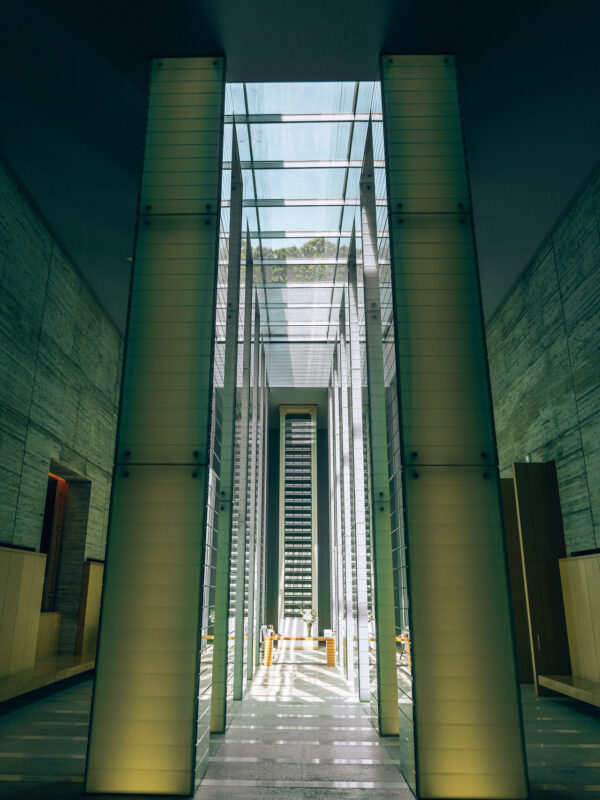
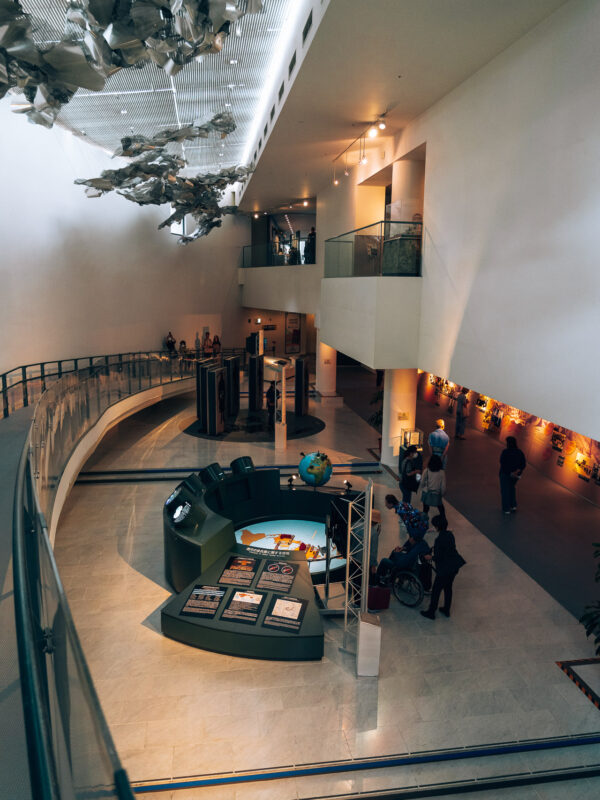
Atomic Bomb Hypocenter site
The Atomic Bomb Hypocenter Park is the exact location of the horrific and destructive bombing on August 9, 1945. The exact hypocenter is marked by a simple yet powerful black monolith.
There are still ruins of an old Catholic church, and you can even see how deep the impact was when you walk a few steps down near the river.
Standing on the site of the Nagasaki Atomic Bomb Hypocenter after visiting the museum is a humbling experience that tells us how important peace is and how important it is to stop tragedies like this from happening again.
READ ALSO: Chikuzen: A hidden gem to see beautiful cherry blossoms in Japan
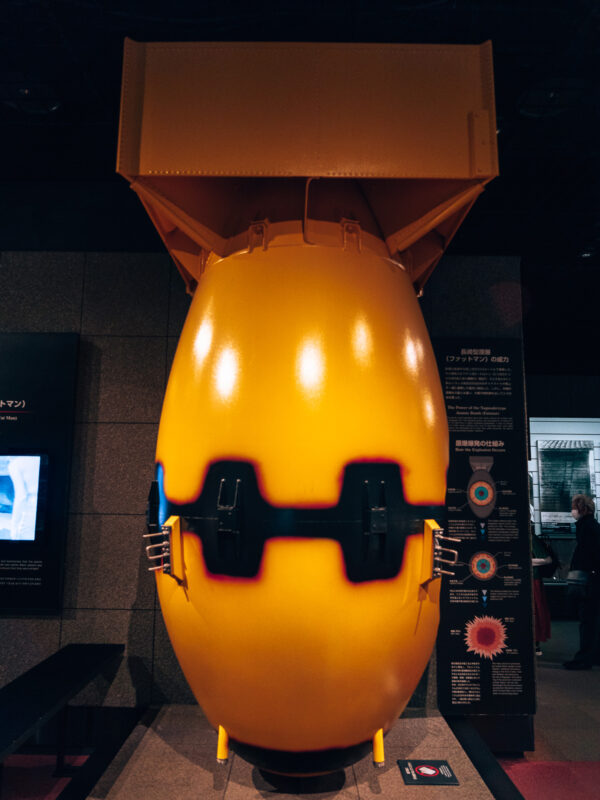
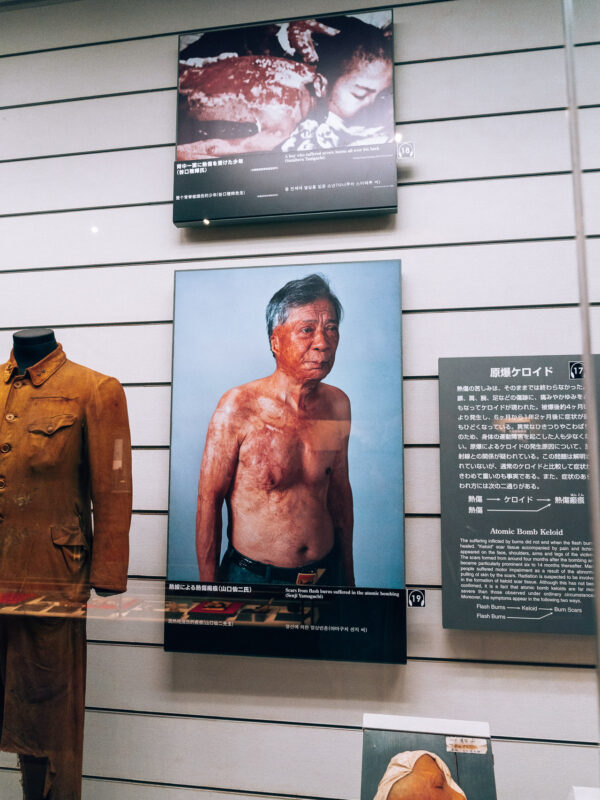
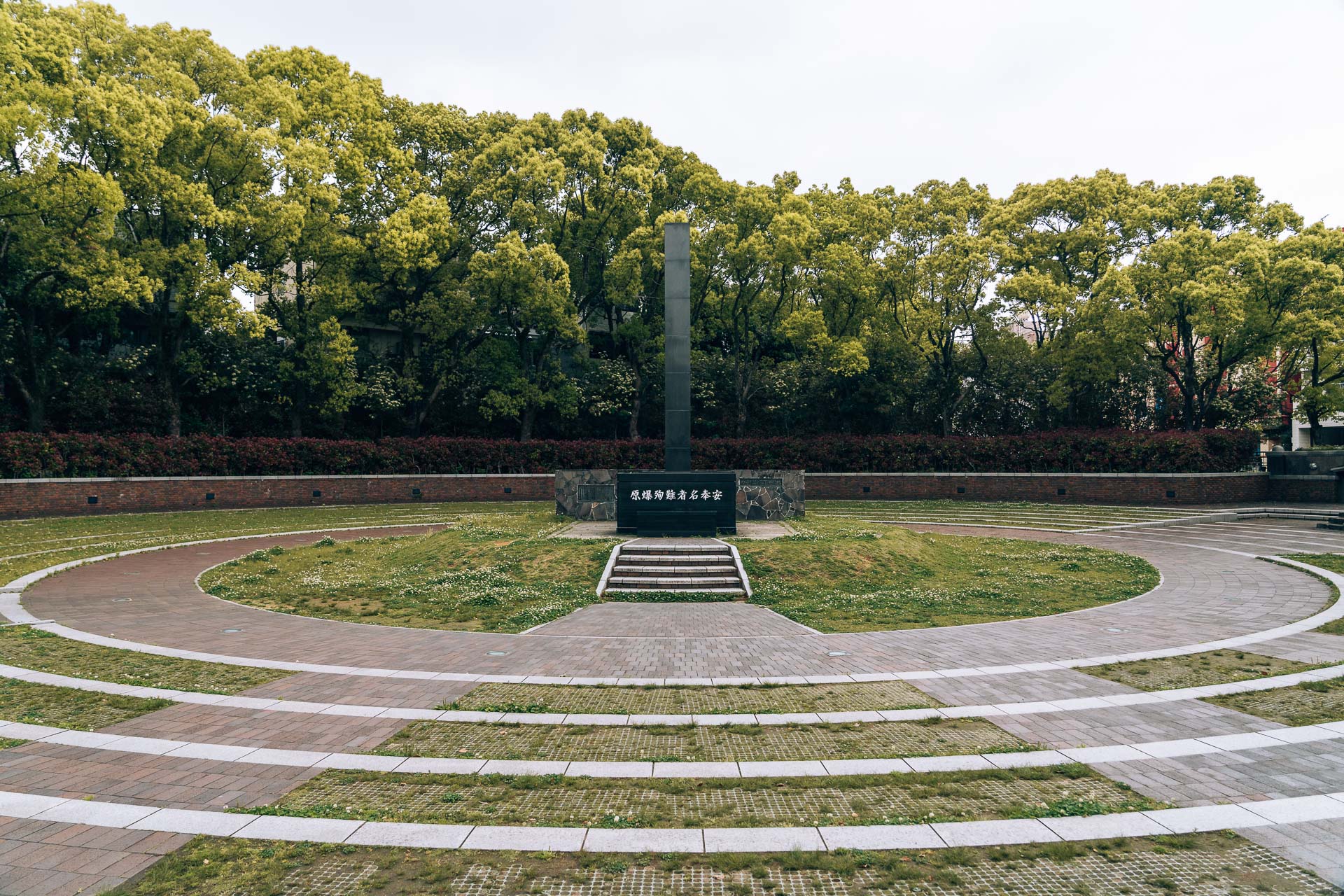
Peace Park Nagasaki
When you walk a bit further, You’ll come across stairs and elevators that will bring you to the Nagasaki Peace Park. As you walk through the park, you’ll see different statues and memorials, each of which has its own story.
The famous Blue Peace Statue is very moving because its spread arms are both a call for peace and a warning against nuclear weapons. The fountain and the quiet atmosphere of the park make it a great place to reflect.
Peace Park in Nagasaki is a great place to learn about history, but it’s also a deep experience that shows how important peace and understanding are in our world. So, make time to stop by and show your respect.
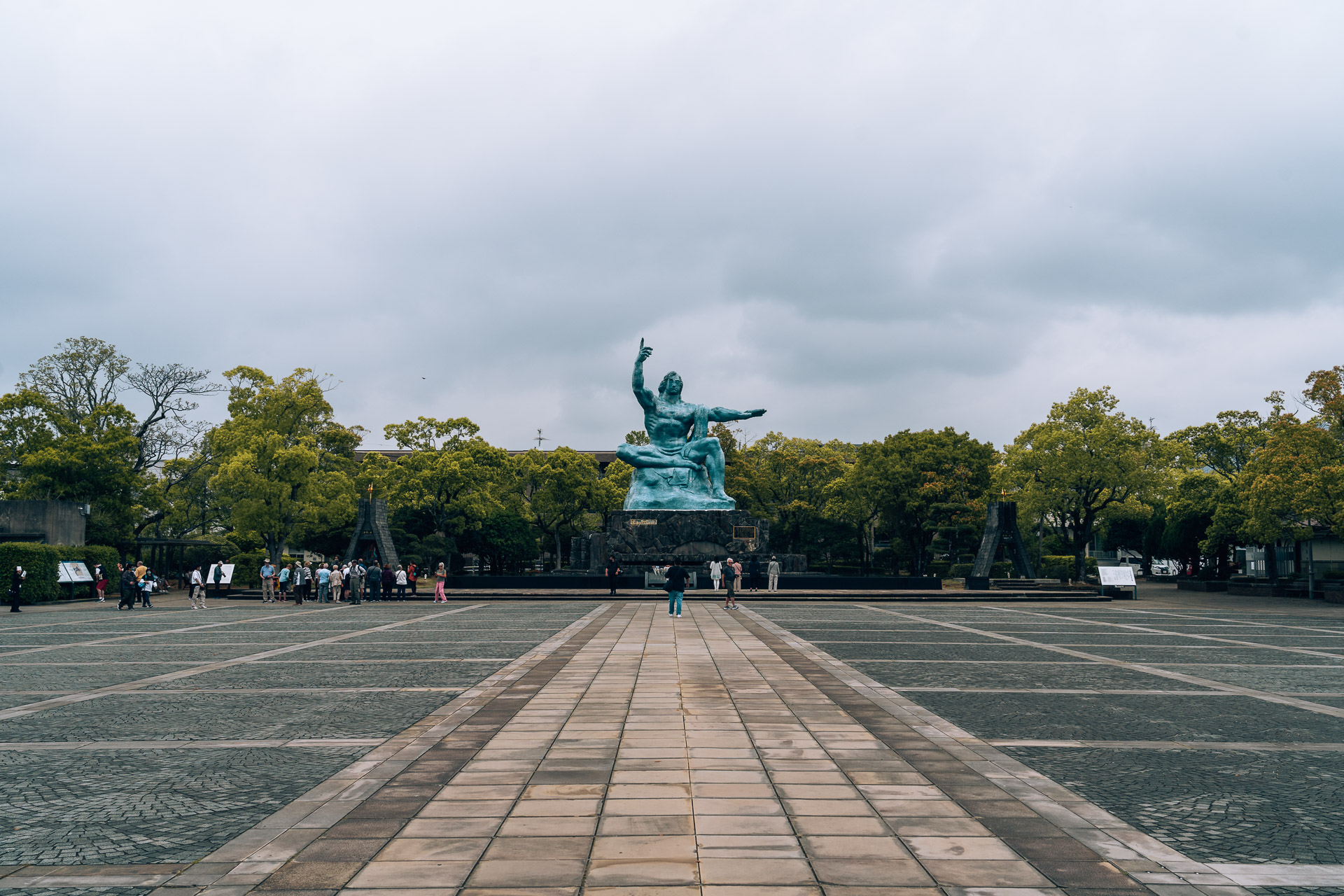
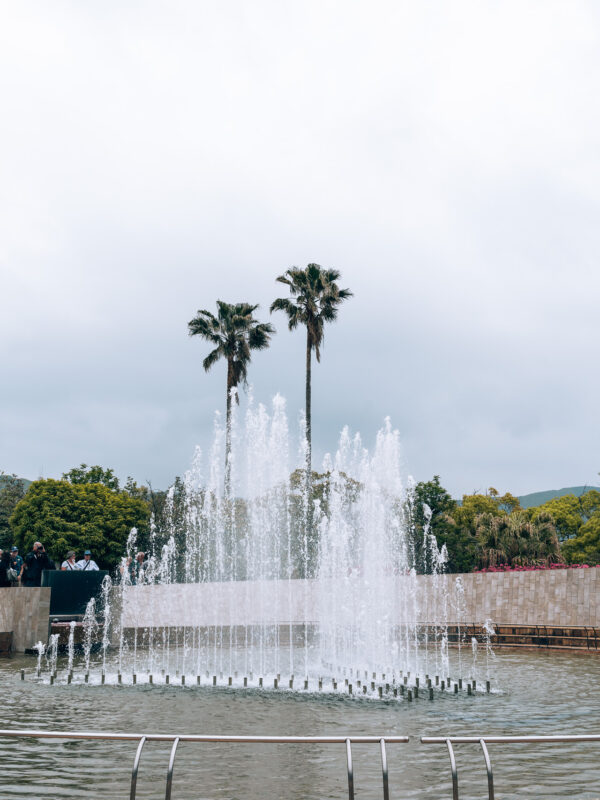
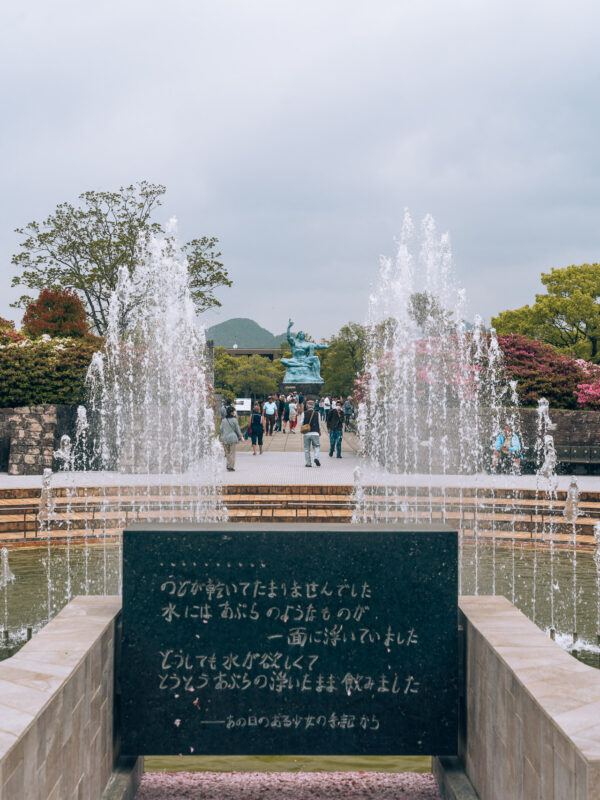
Urakami Cathedral
I am not that religious but when I travel I love to visit stunning and unique places or buildings. However, The Urakami Cathedral is just a few minutes walk from the Nagasaki Peace Park and it’s a beautiful piece of architecture that represents an important part of Nagasaki’s past.
This stunning landmark is not only an iconic symbol of the city but also holds a historical significance. The original cathedral was tragically destroyed during the atomic bombing in 1945 and subsequently rebuilt as a testament to resilience and faith.
Take a moment inside to admire the awe-spiring interior filled with carefully carved stained-glass windows and delicate woodwork. Visiting Urakami Cathedral offers not only a chance to admire the architectural beauty but also serves as a powerful reminder of humanity’s ability to rise above tragedy with hope and faith.
READ ALSO: Chikuzen: A hidden gem to see beautiful cherry blossoms in Japan
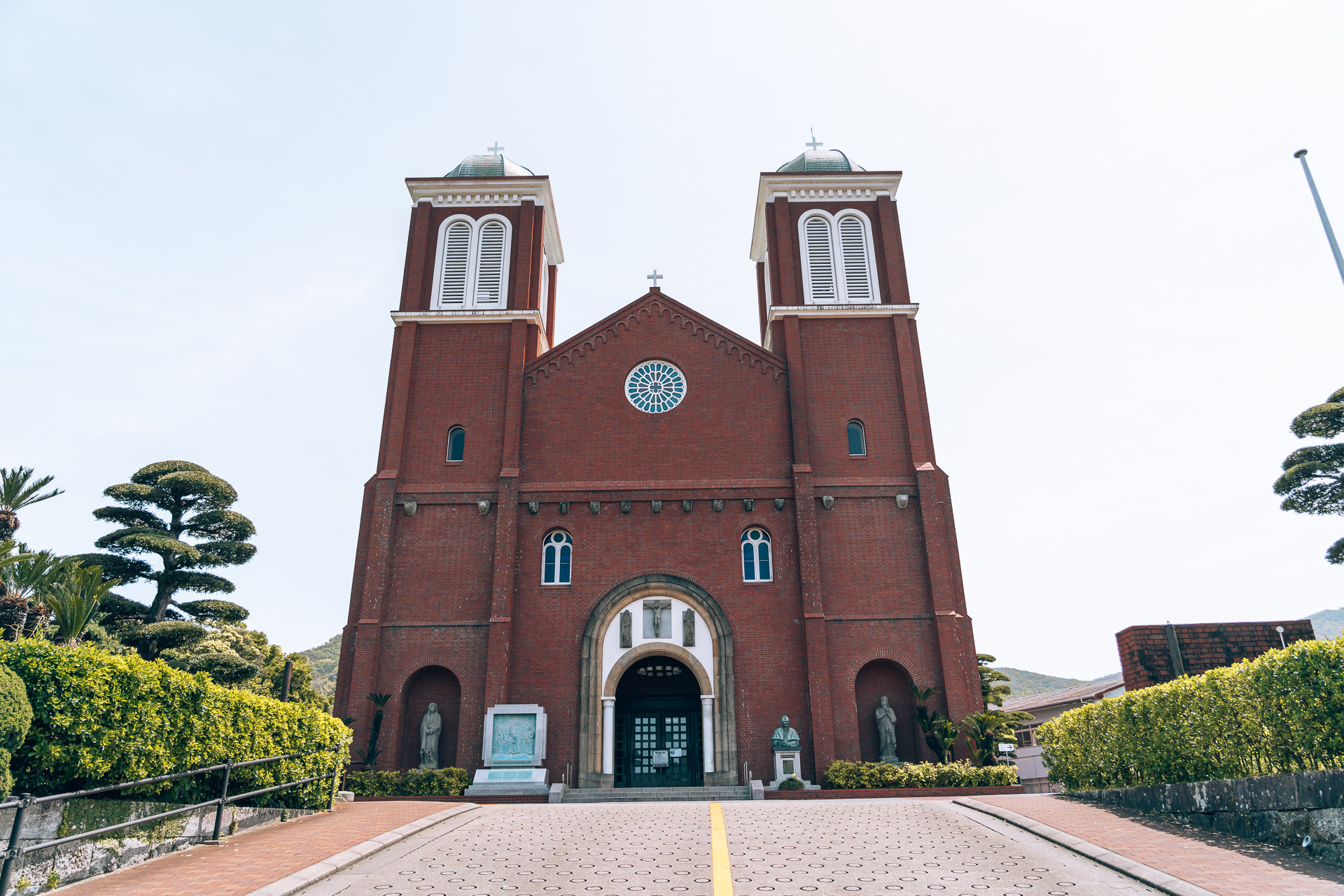
Shiroyama Elementary School
What makes this place so unique is that it’s only a few hundred meters from the hypocenter and it was extensively devastated during the attack, which killed numerous children and teachers.
This was explained during the audio tour of the Atomic Bomb Museum and since this event had such an impact on me, I decided to visit the school as well.
A small part of the school building was still standing after the blast, and now it’s used as an exhibit where you can see pictures and other illustrations from that horrible moment.
The rest of the school was later reconstructed and is now operational. You can also get a fantastic view of the Hypocentrum and the city.
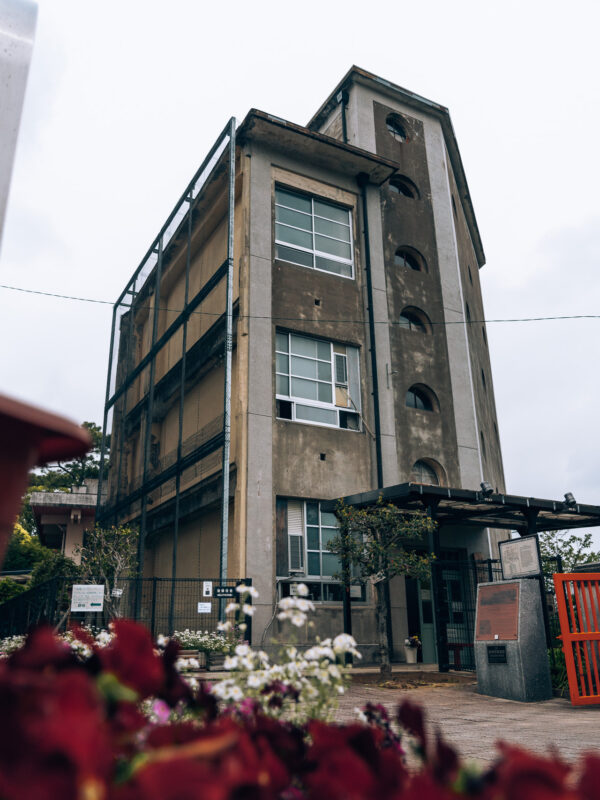
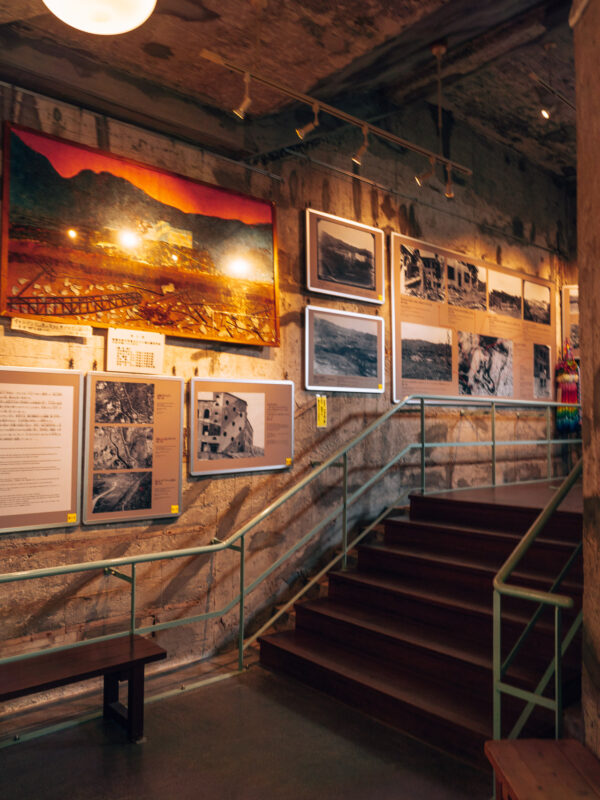
Nagasaki RopeWay & Mount Inasa Observatory
Admiring the incredible sunset at Mount Inasa is without a doubt one of the best things to do in Nagasaki as the nightscapes over the city belong to the most beautiful views at night in the world.
When the sun starts to go down, this 333-meter-high spot becomes a magic show of colours. To reach the top without breaking a sweat, take a ride on the Ropeway – it’s like a fun cable car that gives you awesome views of Nagasaki on the way up.
Here’s the cool part – it doesn’t cost a fortune! The price for the ropeway ride is super reasonable, so you get a jaw-dropping sunset experience without burning a hole in your pocket.
Don’t miss the chance to see Nagasaki transforming into an illuminated maze of flickering neon lights and an awesome sunset with countless islands in the distance.
TIP: A return ride with the ropeway cost 1250 JPY and bring some snacks as there is only one food stall at the top.
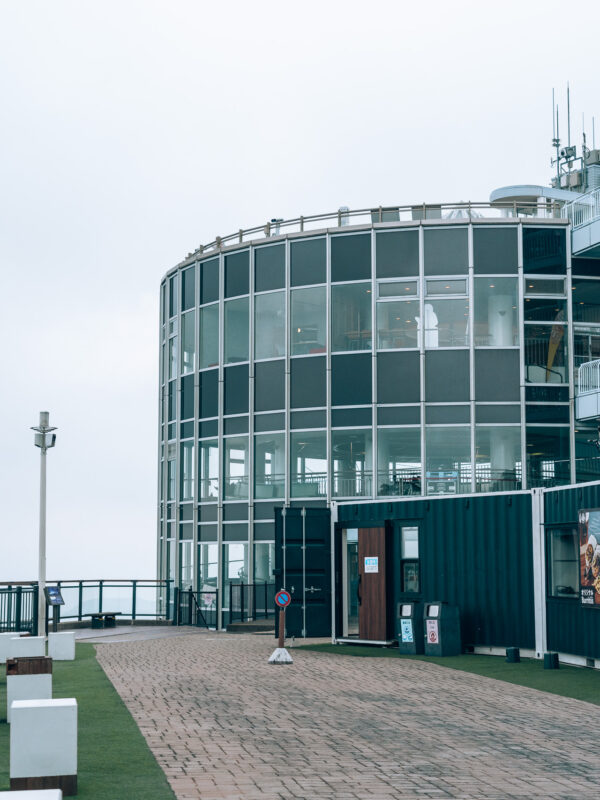
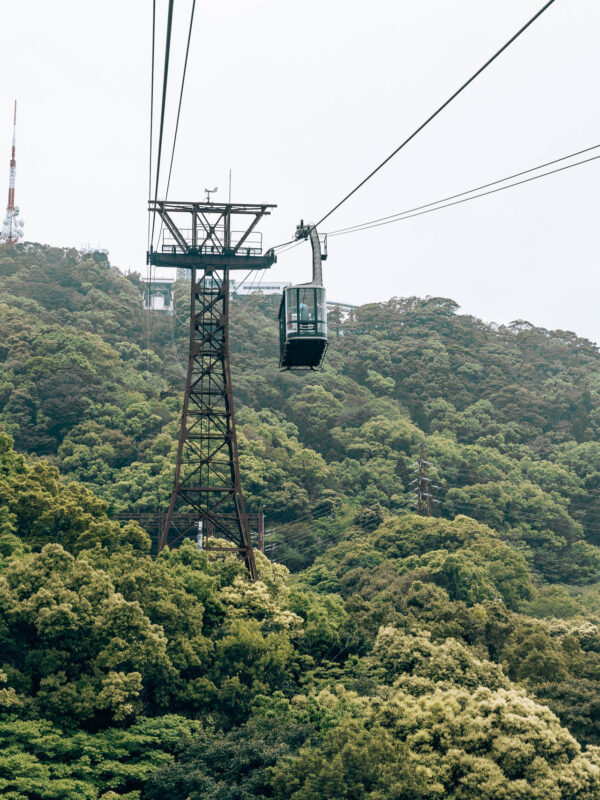
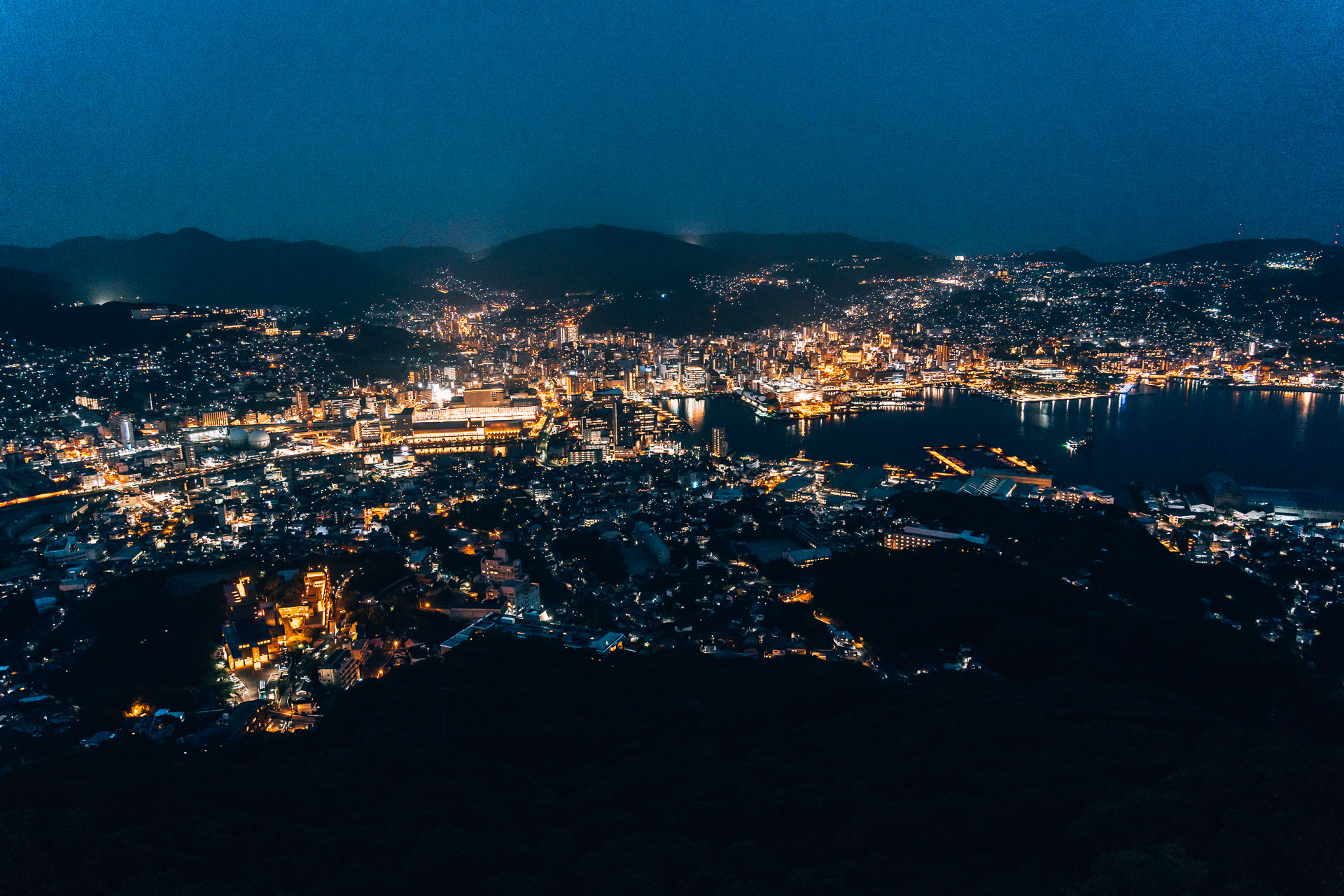
Day 3:
Sofukuji Temple
Tucked away from the bustling neighbourhoods, the Sofuku-ji temple is a hidden gem in Nagasaki. The complex is formed by several massive shrines, well-preserved temples, and exquisitely beautiful traditional Japanese gardens.
Taking the blue tram line and getting off at the Sofuku-ji temple stop is the best way to get there. From there, you can walk through the small streets until you reach the massive pink entrance gate, which is spectacular in its own right.
READ ALSO: Jigokudani monkey park: the most famous hot spring with monkeys in Japan
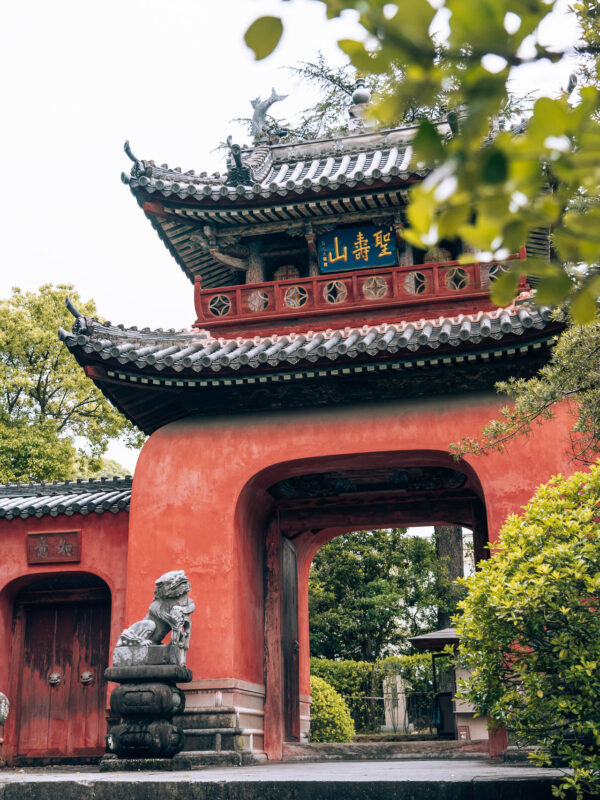
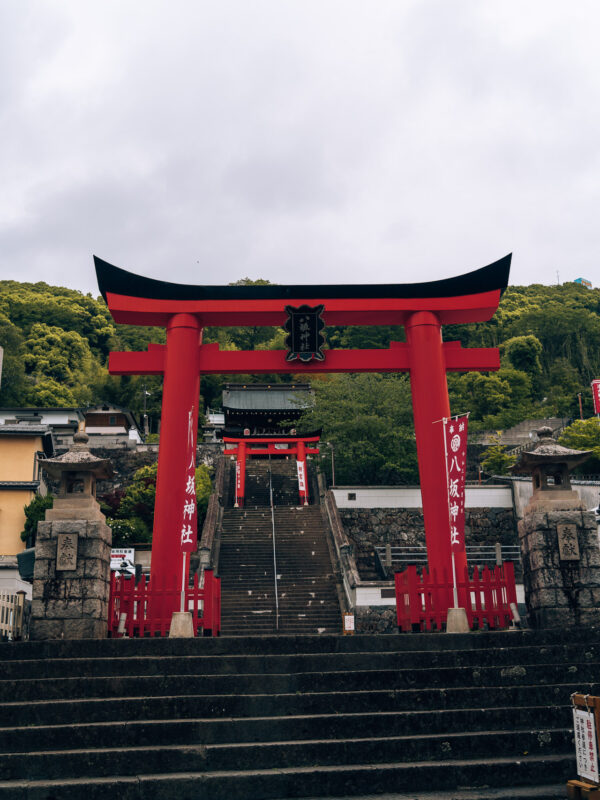
Hamano-Machi Arcade
Experience the vibrant charm of Nagasaki at Hamano-Machi Arcade, a lively shopping district perfect for strolling through. This bustling arcade, located in the heart of the city, offers many shops, eateries, and entertainment.
This is the perfect place to go if you like to look at unique gadgets or enjoy strolling past small local shops.
There are a variety of clothing stores and boutiques that are well-known in this area, as well as to the most traditional Japanese items and culinary delights.
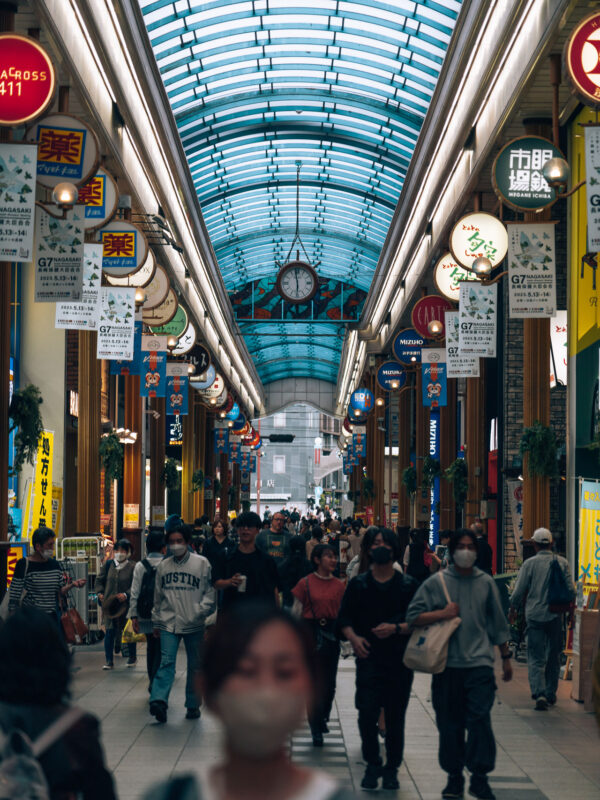
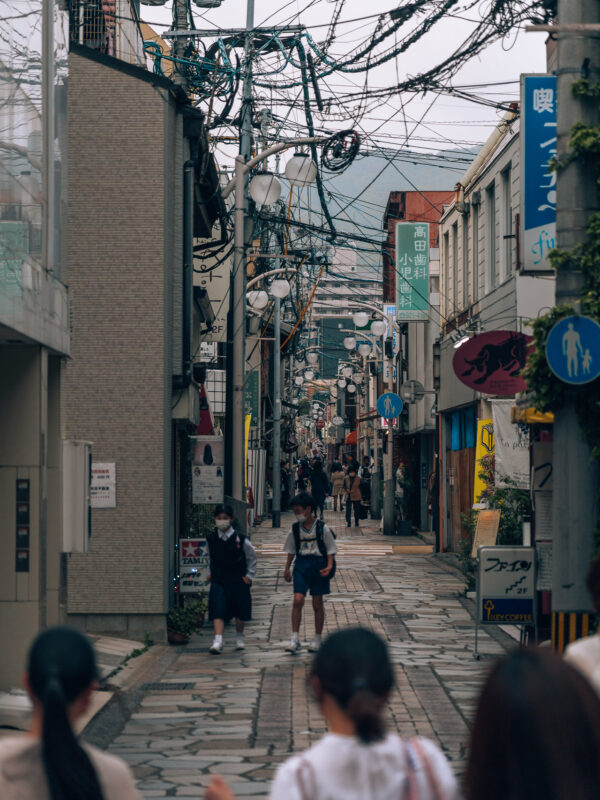
Megane Bashi (Spectacles bridge)
The Megane Bashi, also known as the Spectacles Bridge is one of the highlights in Nagasaki, and while I only went at the end of my trip, I would recommend going at the start of your trip.
With a history dating back to 1623, this bridge easily ranks as Japan’s oldest and survived the atomic bombing of Nagasaki in 1945 as well as multiple floods over the years.
Besides that, the Megane Bashi bridge is also popular these days because of the reflections in the river and the stunning double arches. This is the reason why a large number of visitors as well as locals visit this bridge.
When the tide is low, you can also cross the river over the enormous stones, which is an absolutely amazing experience.
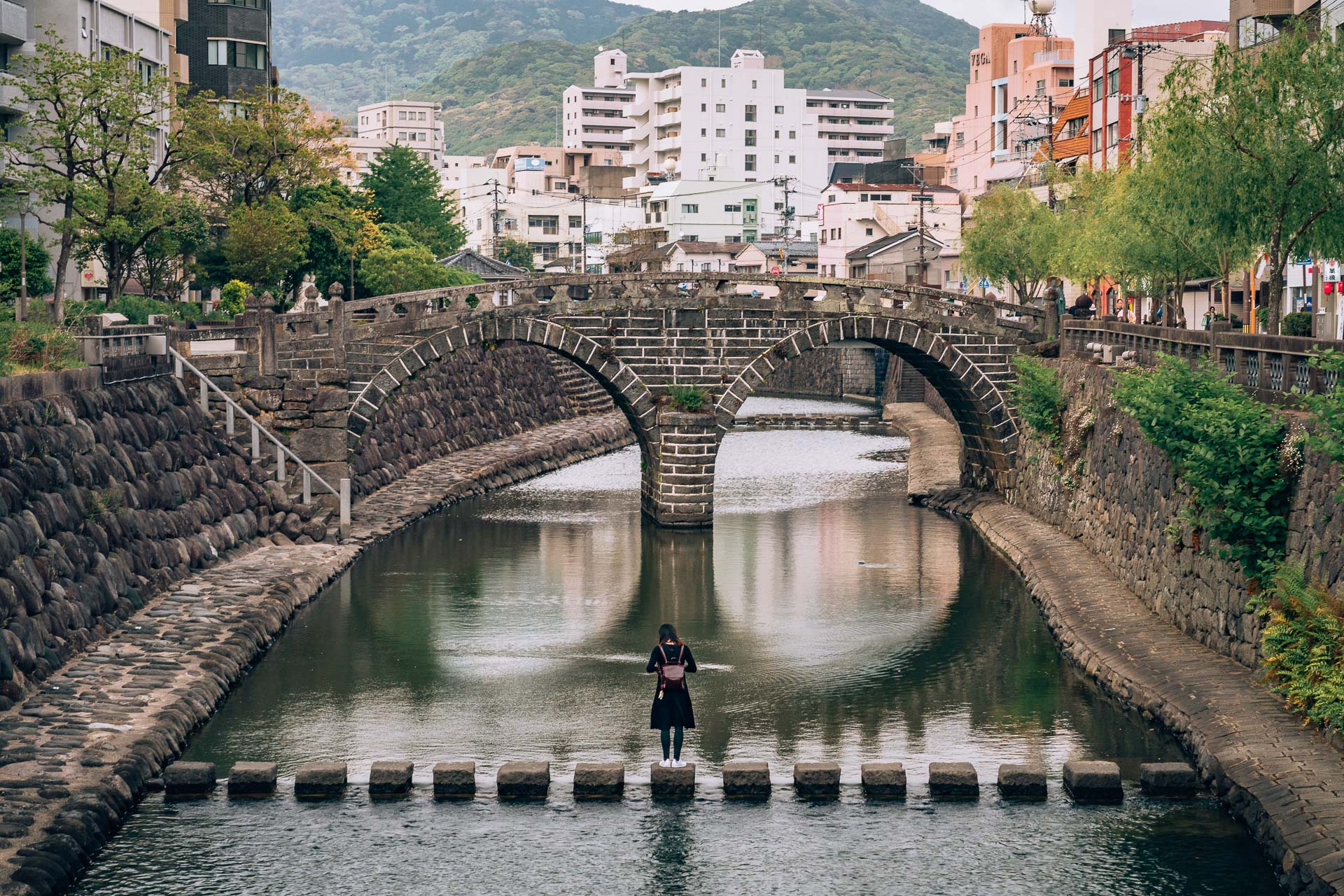
These three days in Nagasaki were outstanding and filled with a wide variety of awesome experiences. From lovely parks and breathtaking landscapes to the most horrific tragedy in human history, Nagasaki should be on your Japan itinerary!
Nonetheless, Nagasaki still has so much to offer in terms of stunning attractions and exciting activities that I plan on coming back soon.
Please feel free to ask any questions you have about this Nagasak itinerary in the comments section below.
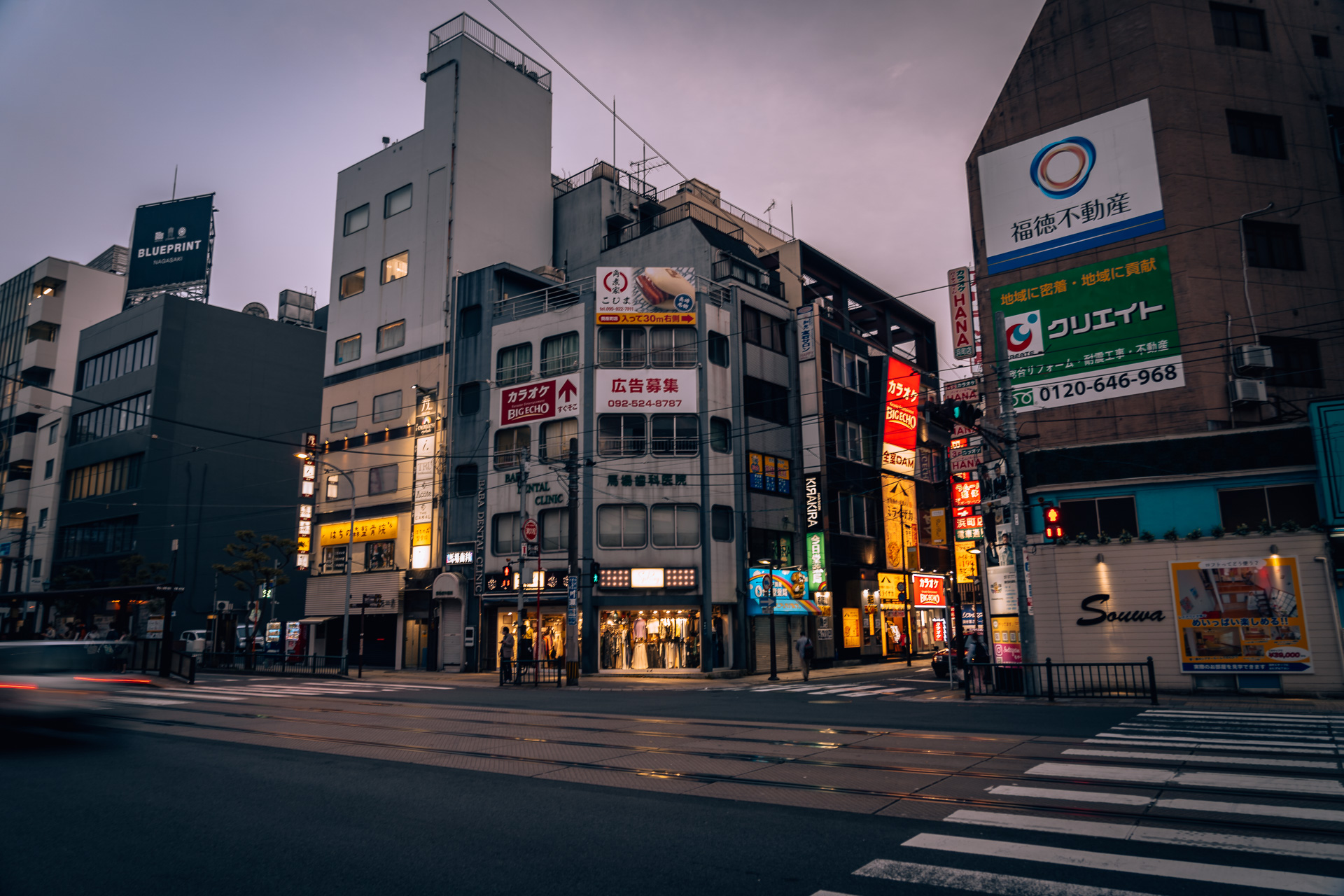
Read more articles about Japan
-
The perfect Nagasaki itinerary: things to do in Nagasaki in 3 days
Plan your Nagasaki itinerary with my favorite travel apps
To plan my adventures, I use these FREE websites and apps as they provide the best information, the best deals, and they are user-friendly.
- Skyscanner – Flight deals
- Booking.com – Hotels and accommodation
- TourRadar – Group trips
- TripAdvisor – Reviews and activities
- HostelWorld – Hostels
- GetYourGuide – Activities and excursions
- RentalCars – Car rental
- Omio – Transport
- iVisa – Travel documents
- Wise – Money transfer
- World Nomads – Travel Insurance
PICTURES AND EDITING
All the pictures on this page are made and owned by me. If you are interested in some pictures to use for your magazine, website, blog, or any other purpose, just send me an email and we’ll figure it out.
Do you like the edits? My Presets will be online soon so you can edit your pictures in just one click!
The camera gear I used for this trip
I never go out without my camera and many people ask me which gear I use. So to make it quite easy, I listed all the gear I used for this trip below.
Most of the time, I travel with the Sony A7III and the Sony 24-105mm/f4 as my primary lens but depending on the location, I change to another setup. However, I love the Tamron 17-28 to shoot in the big cities.


